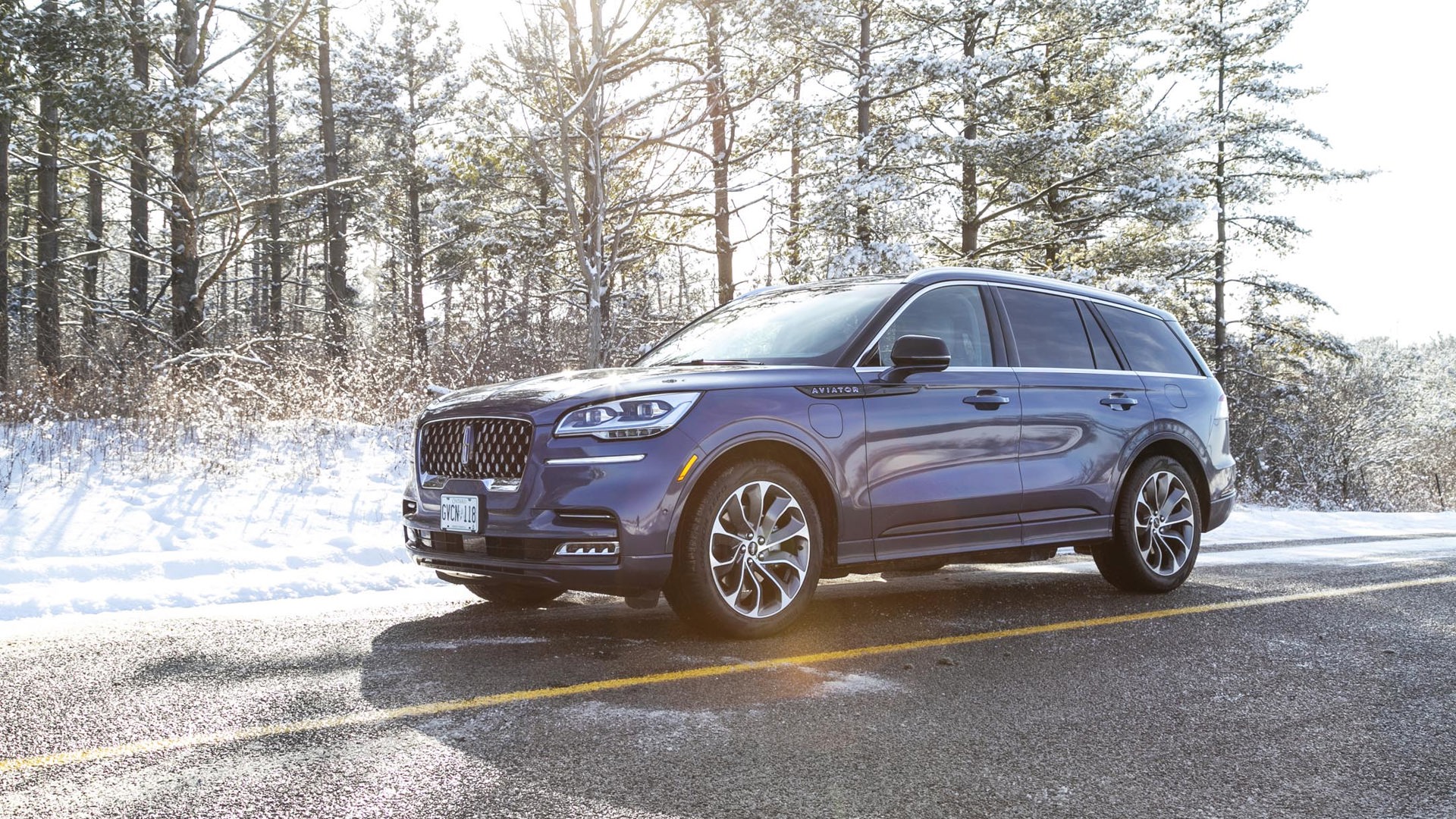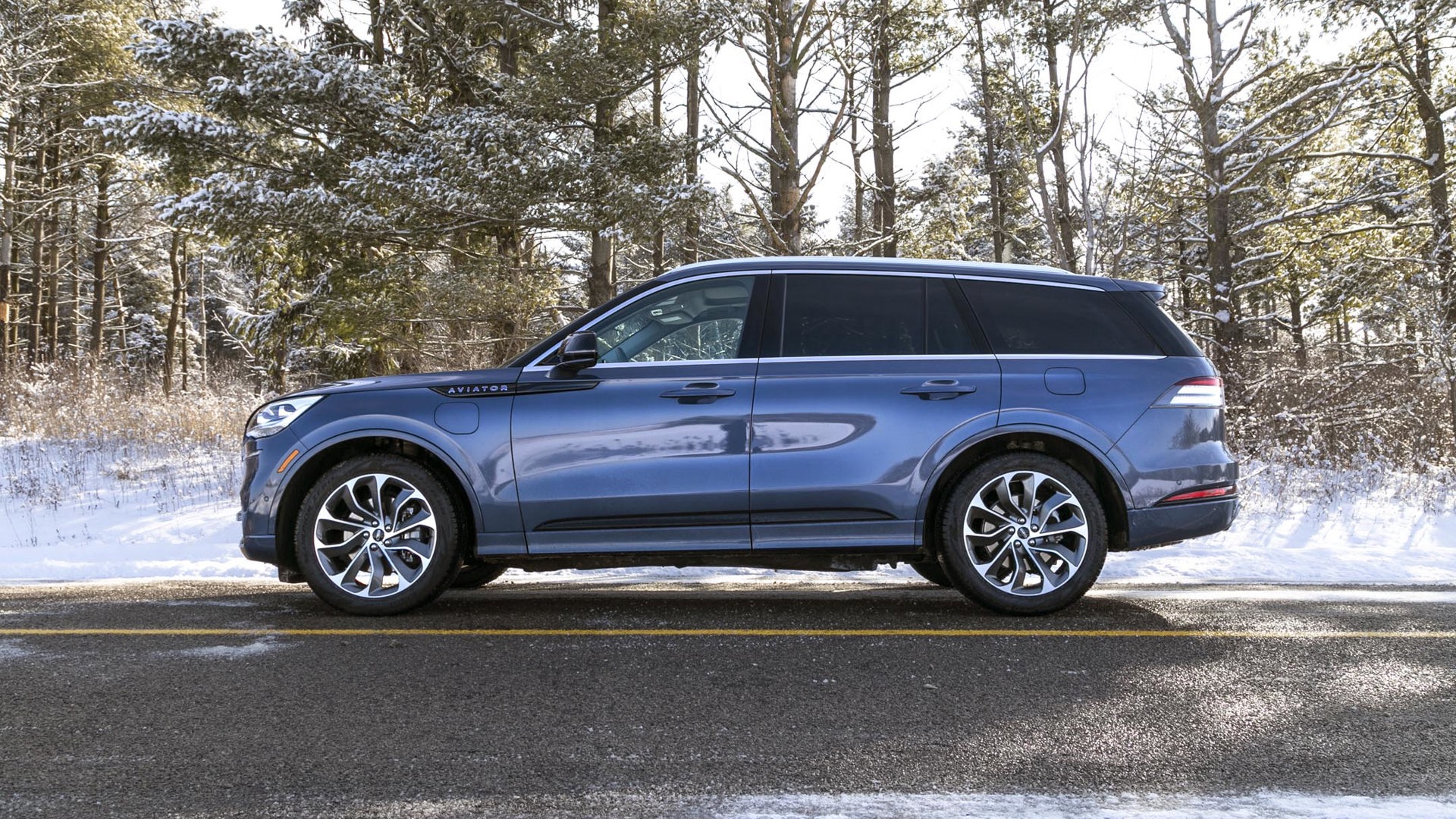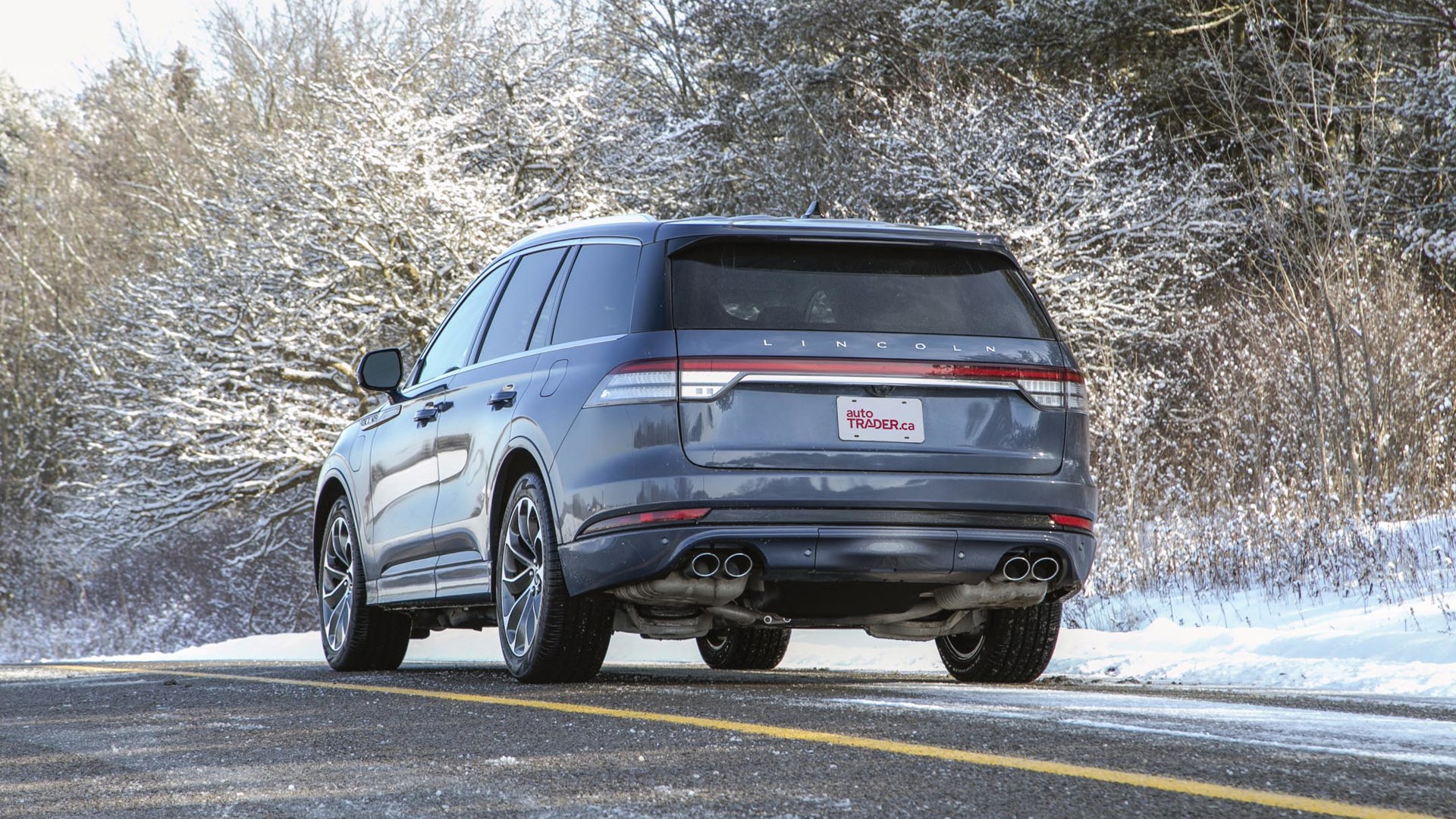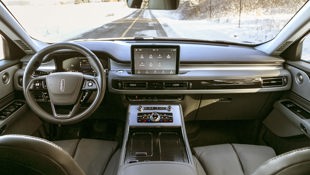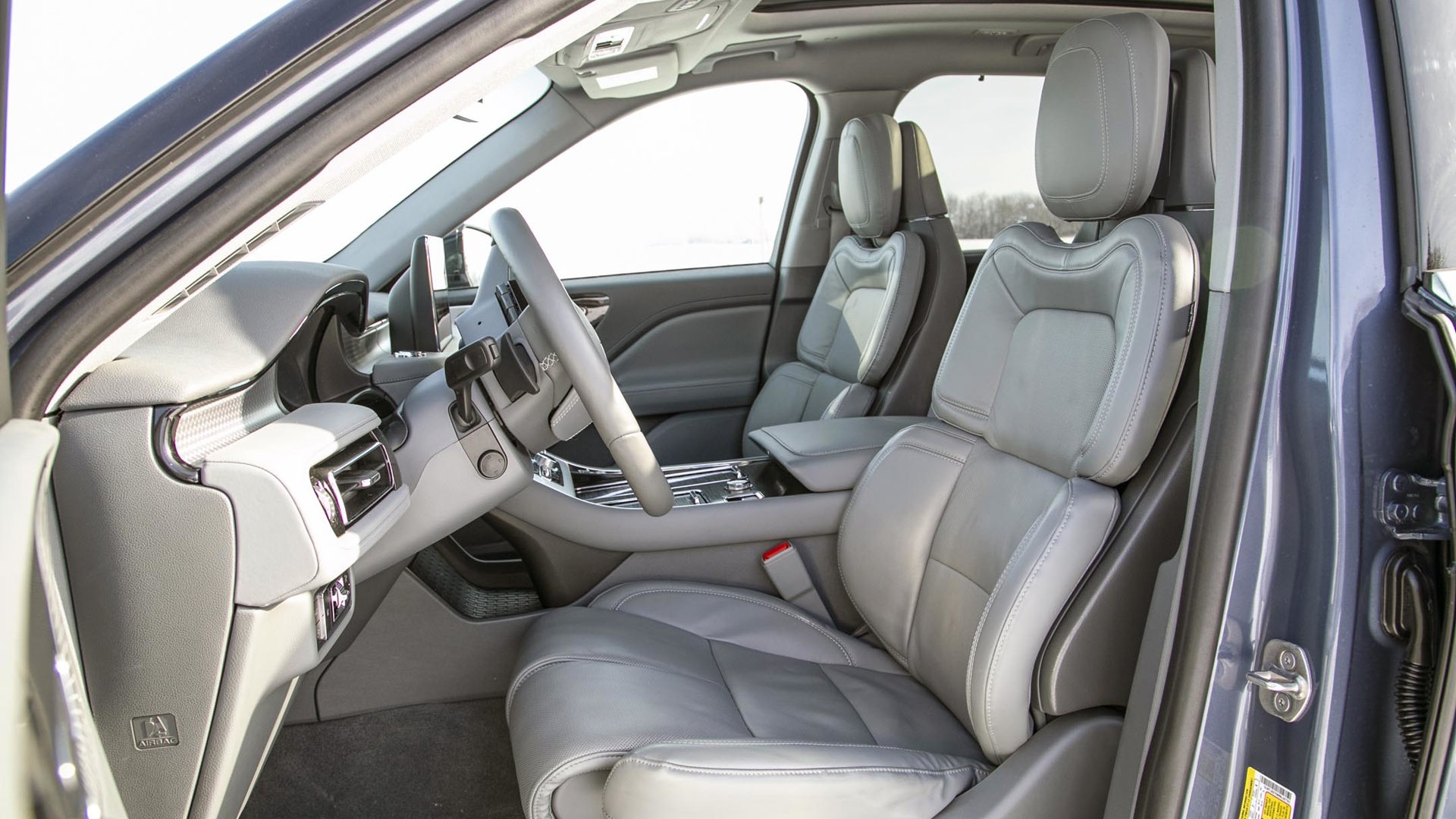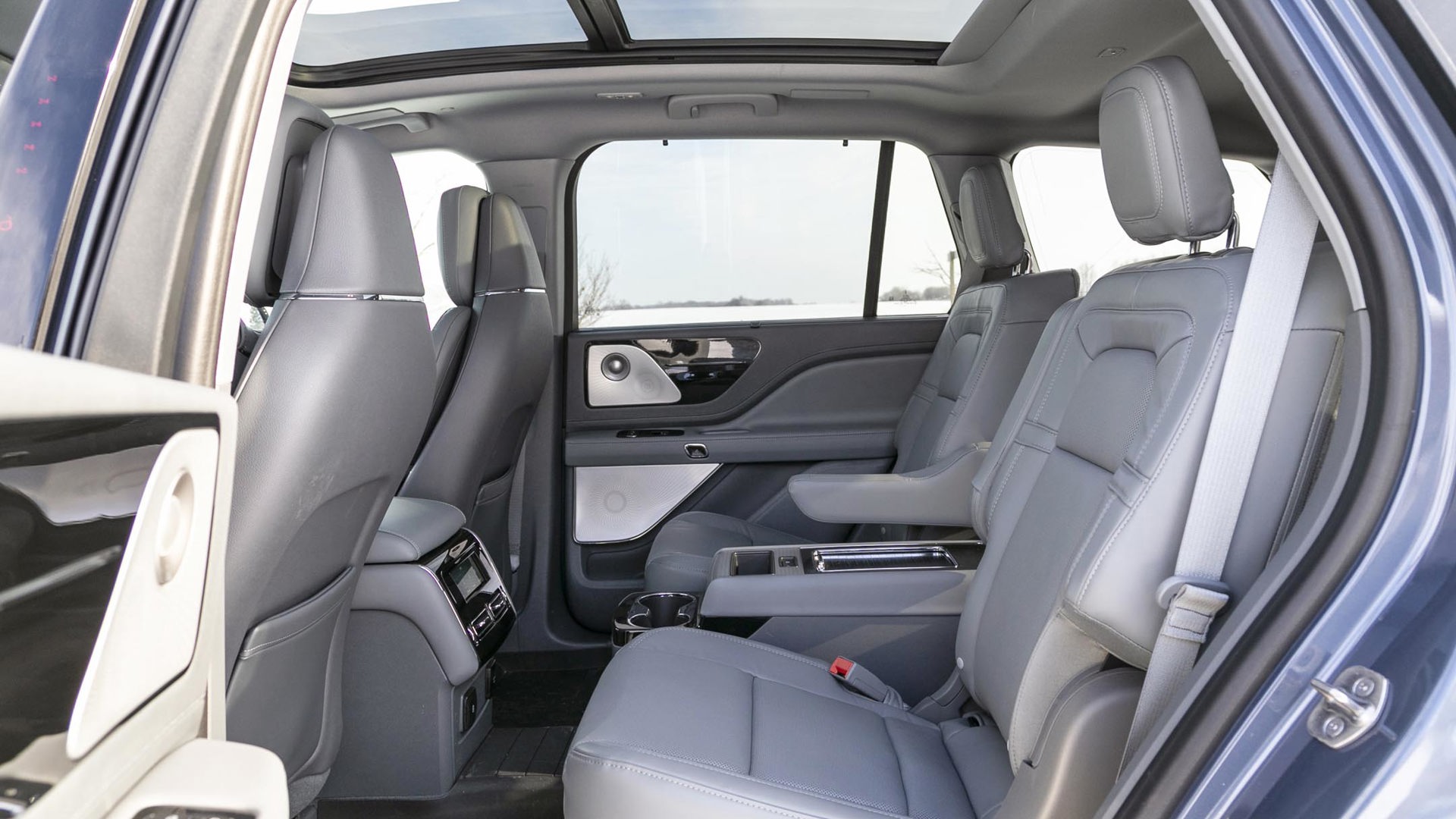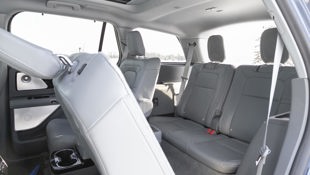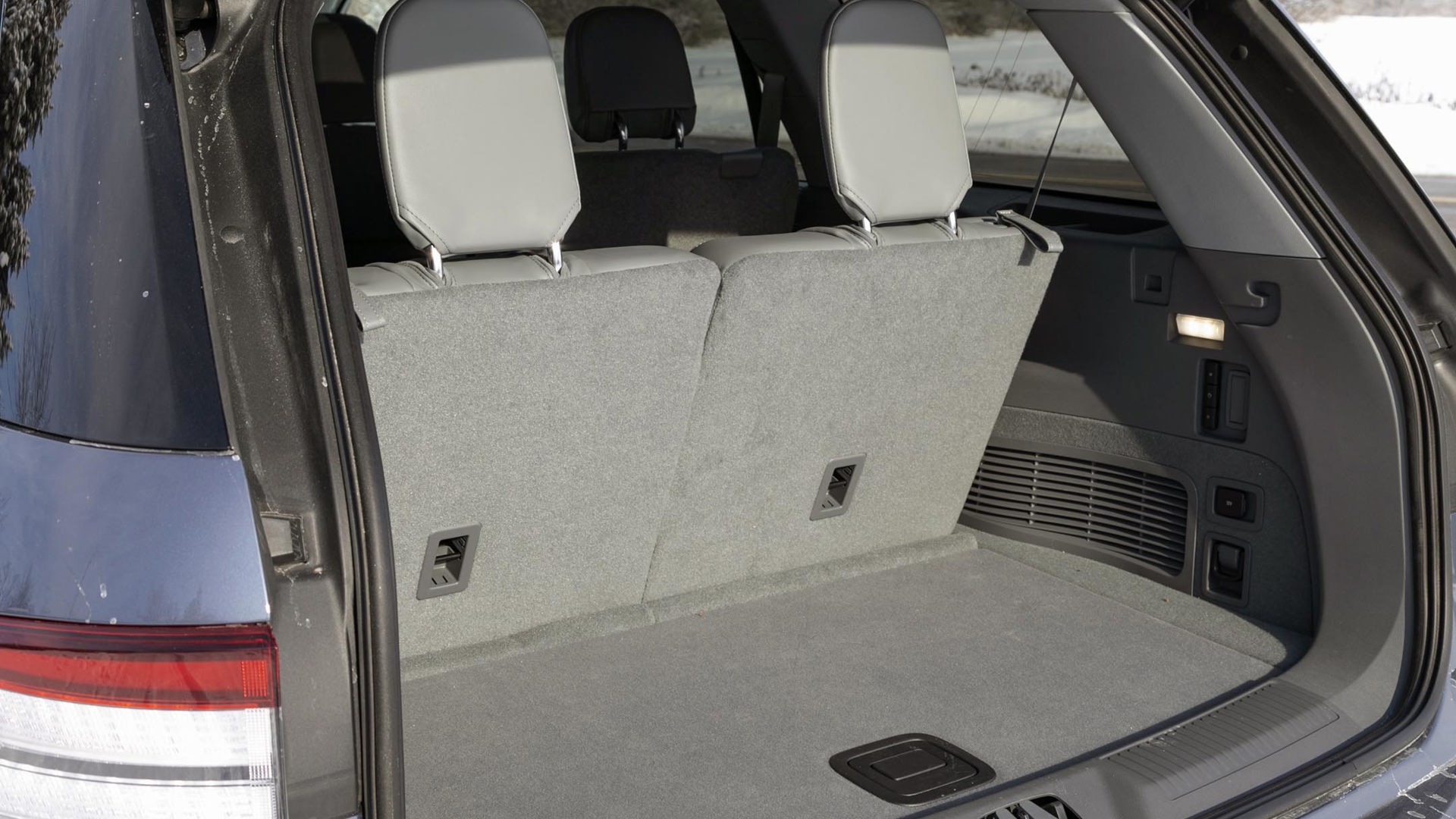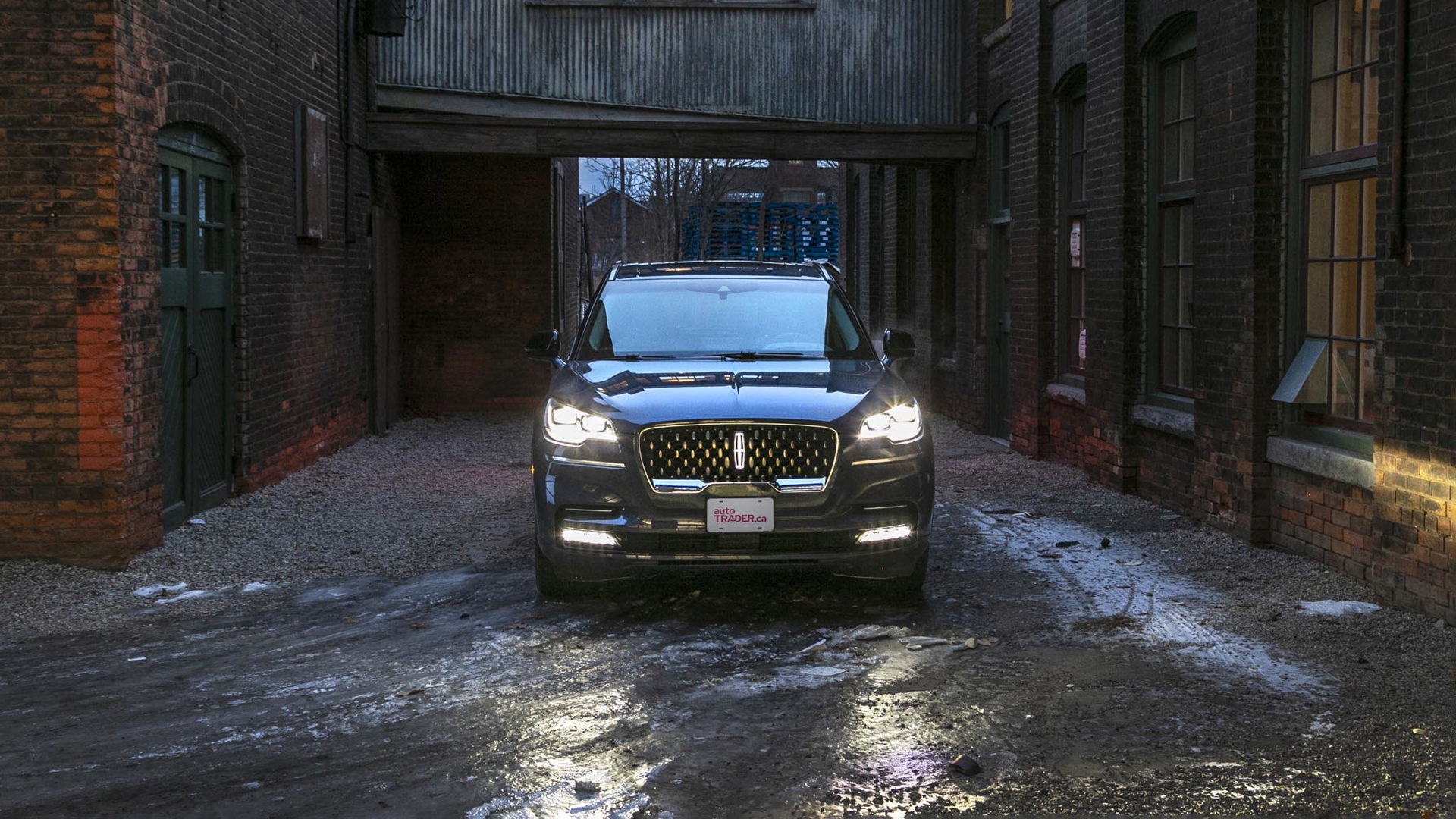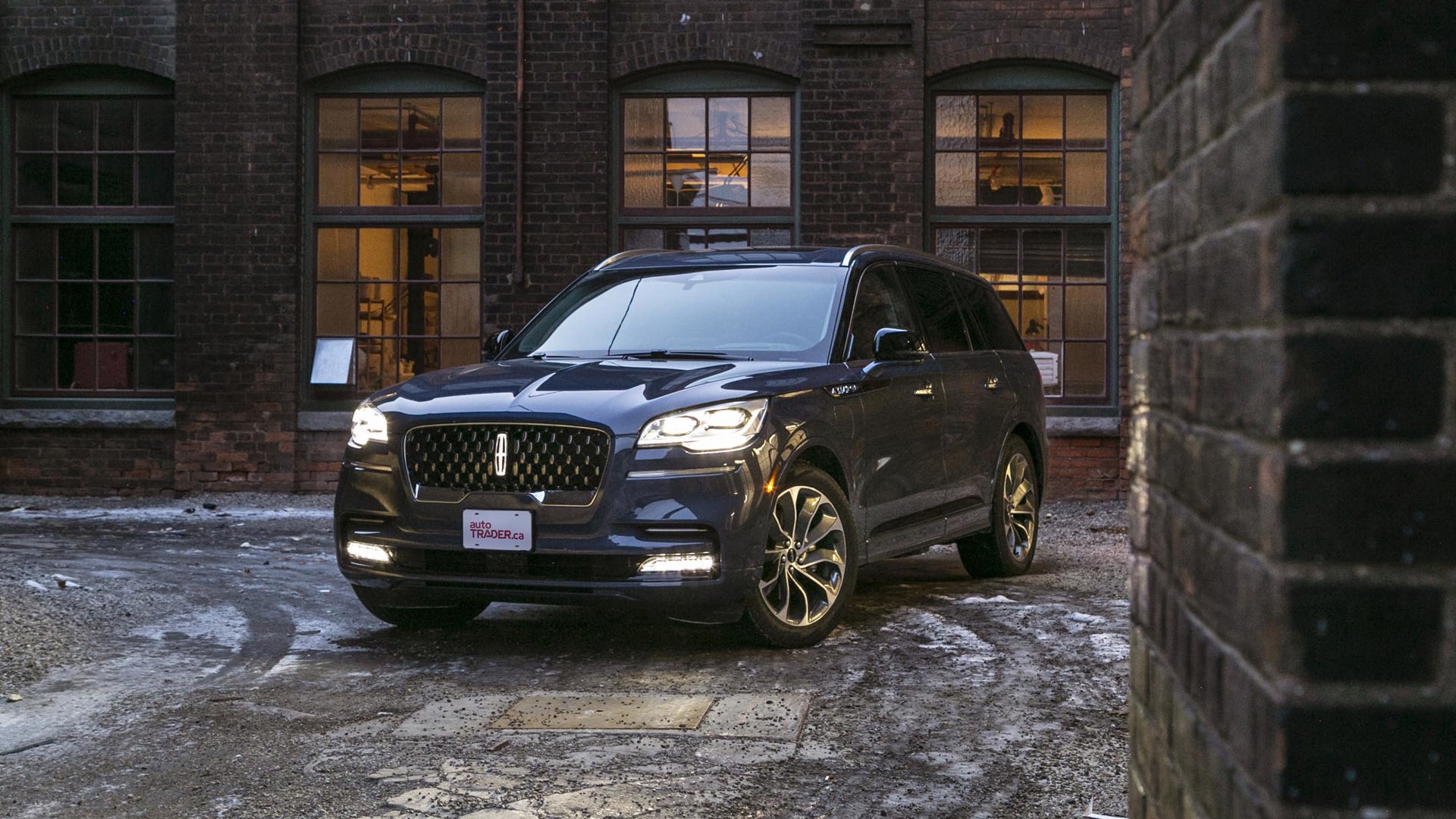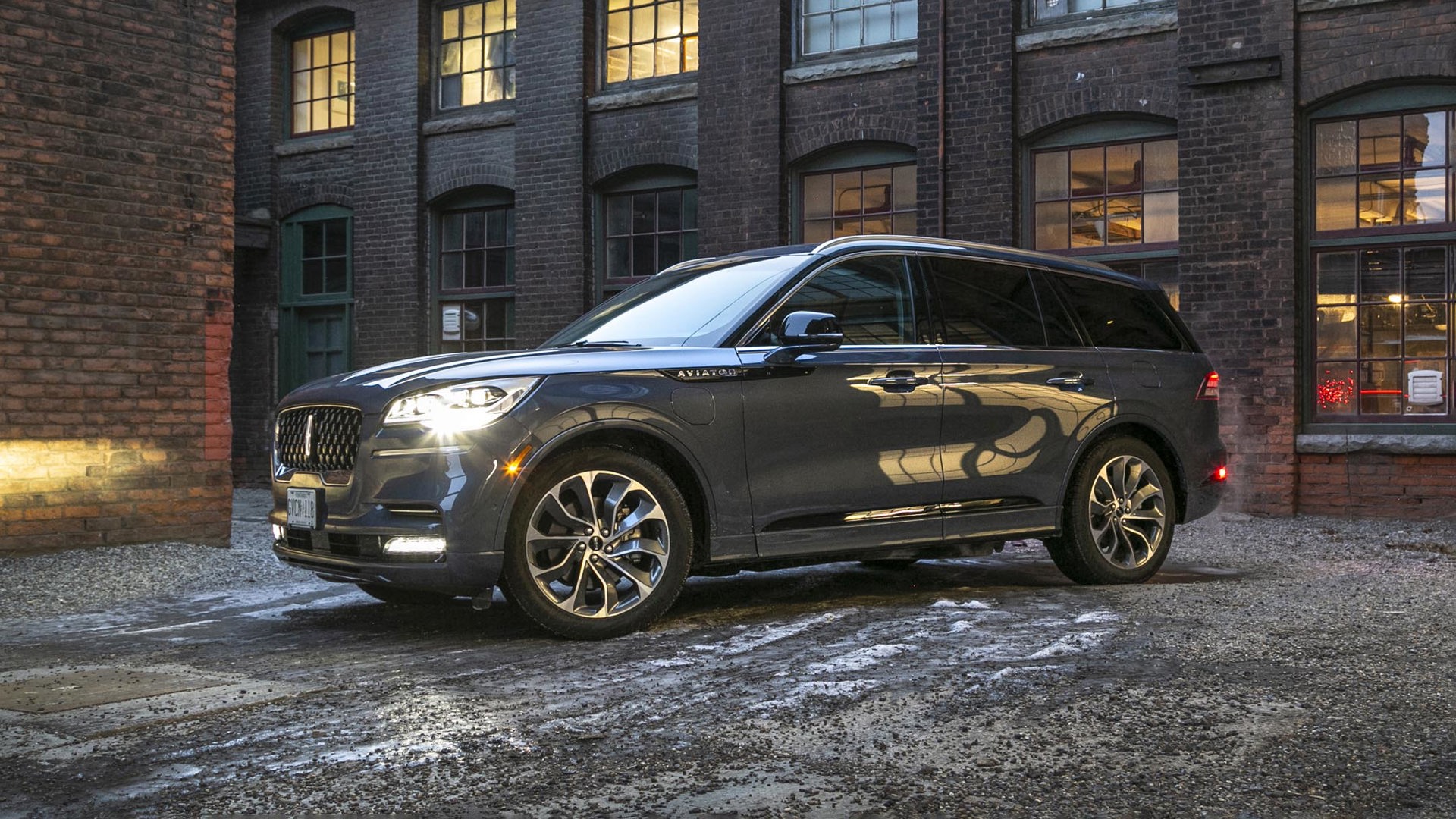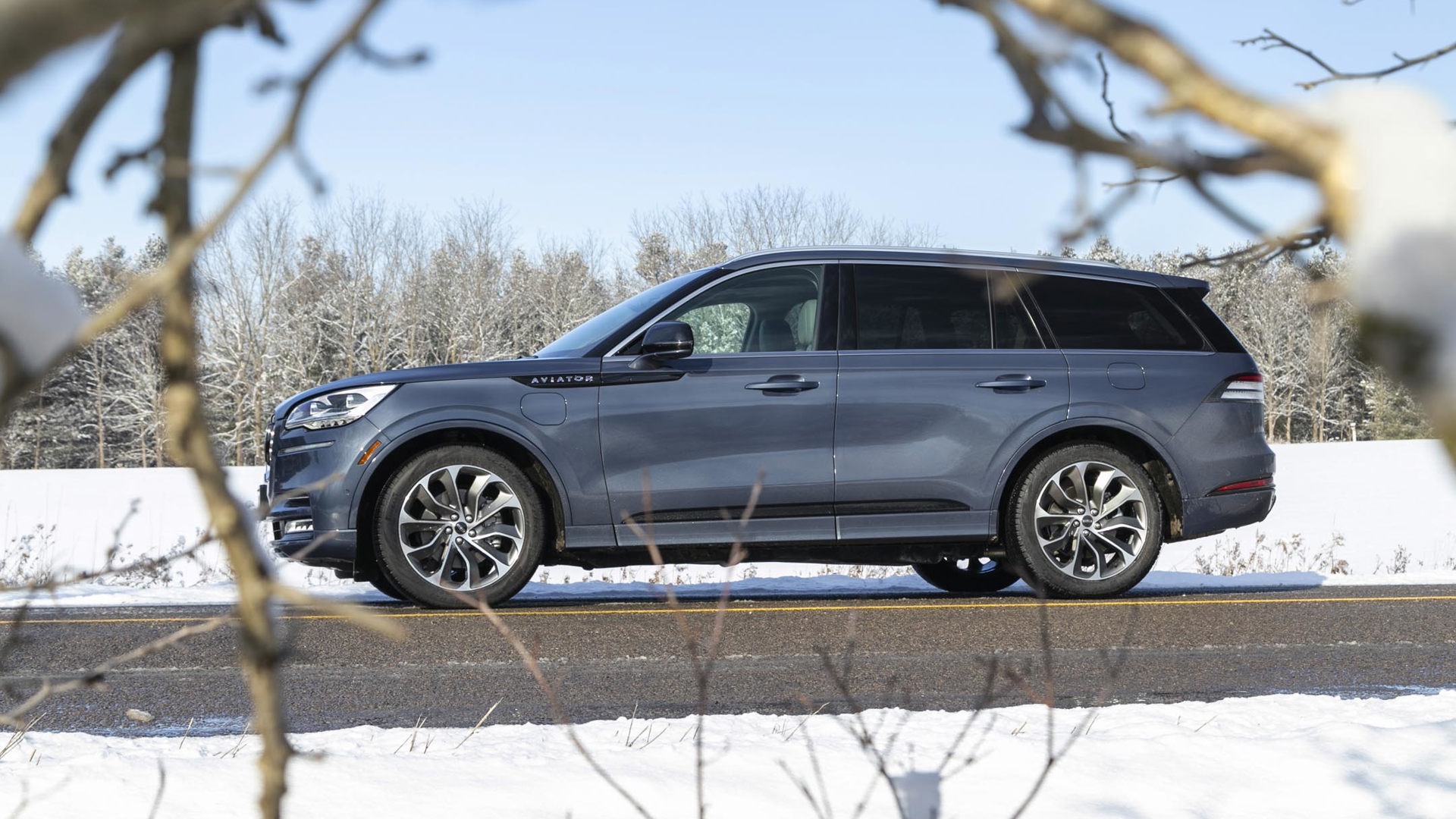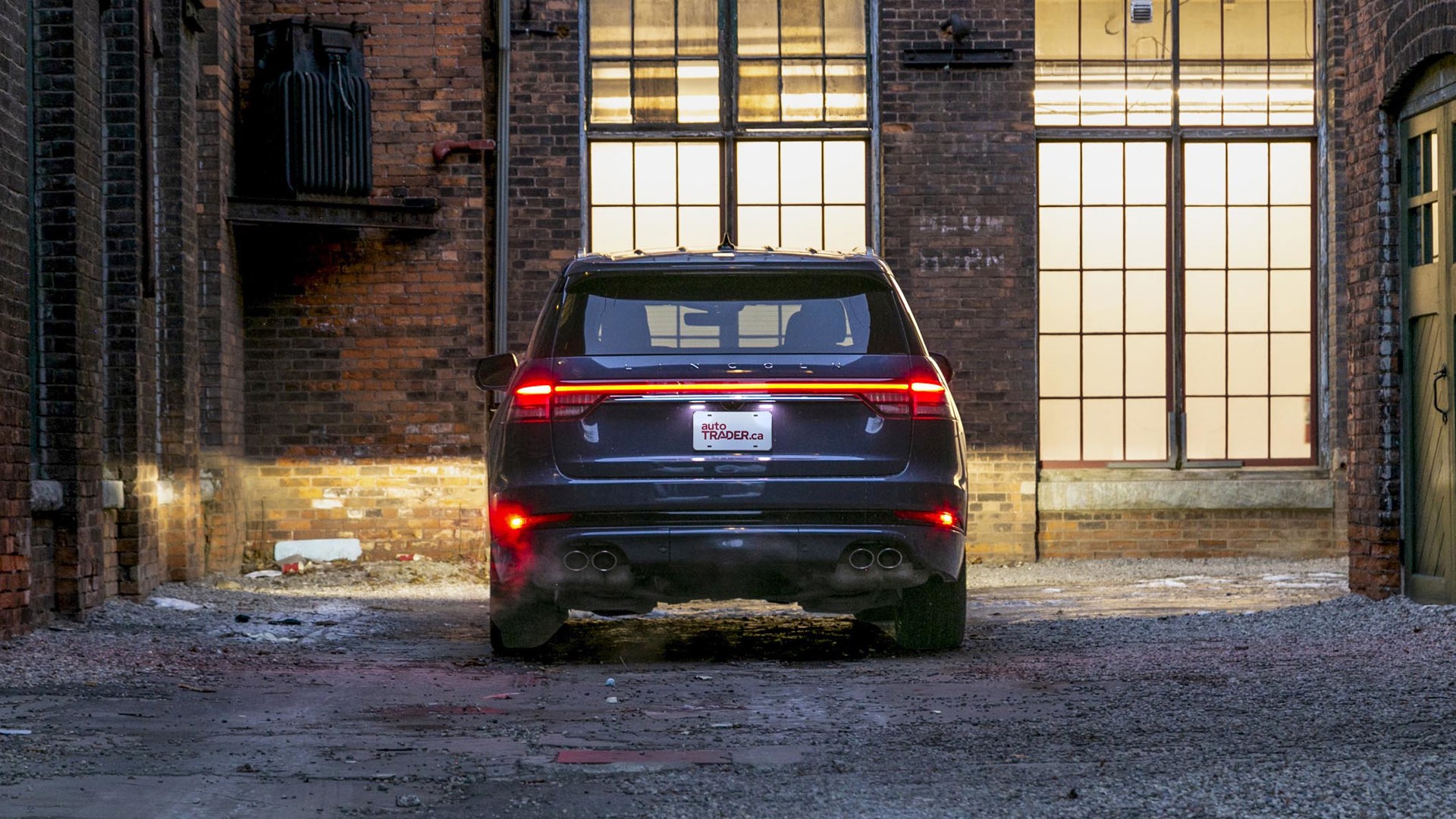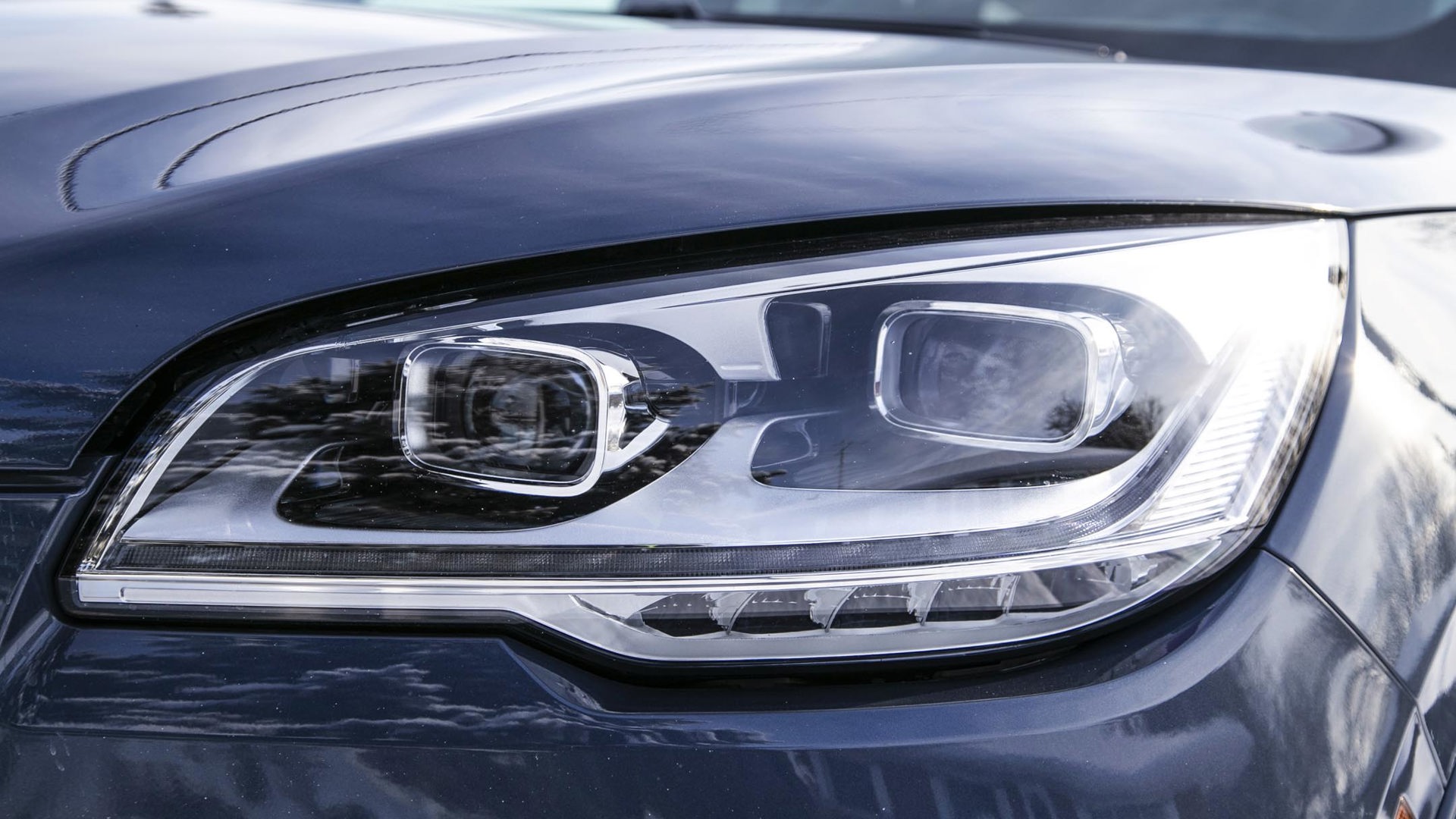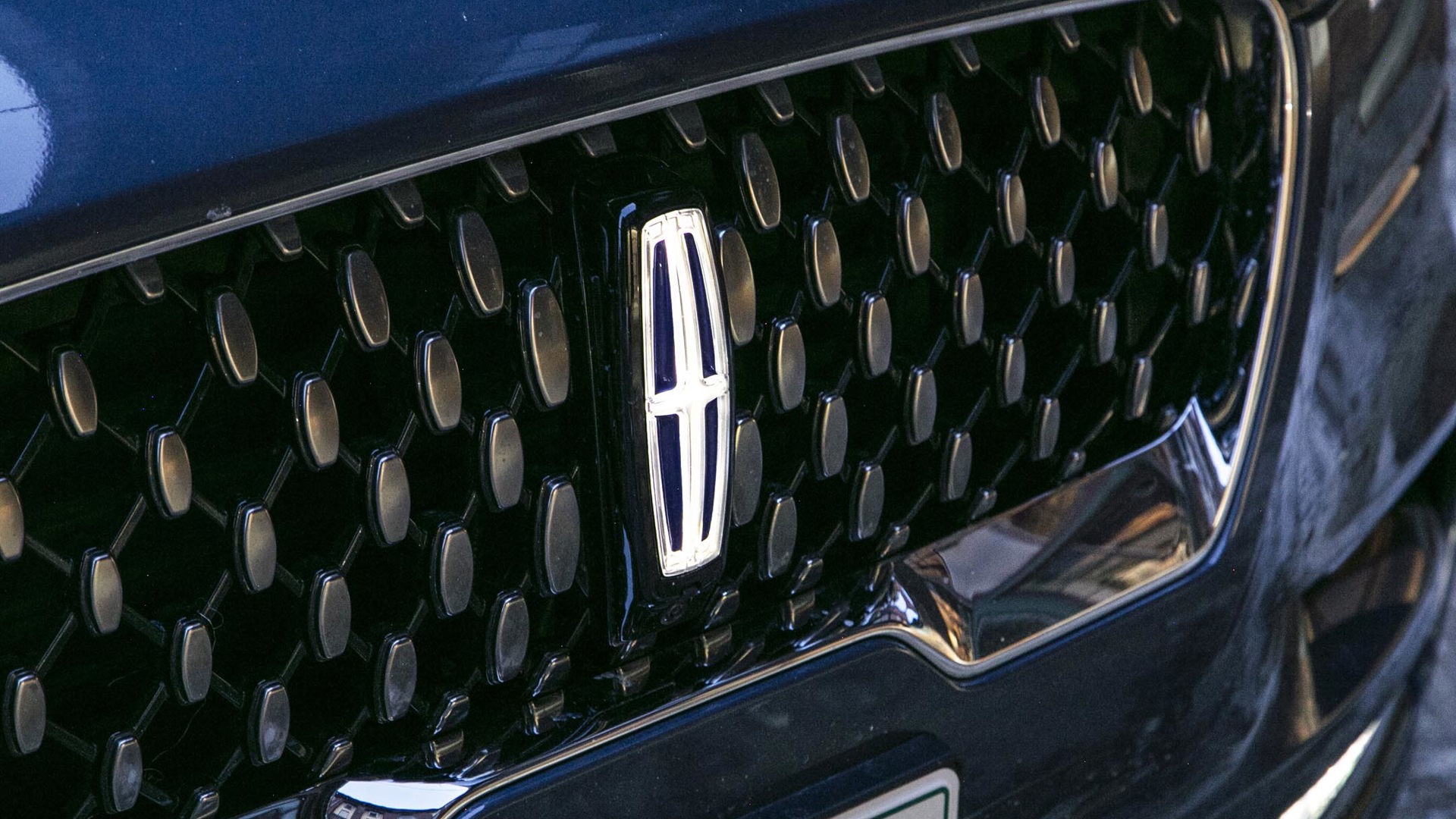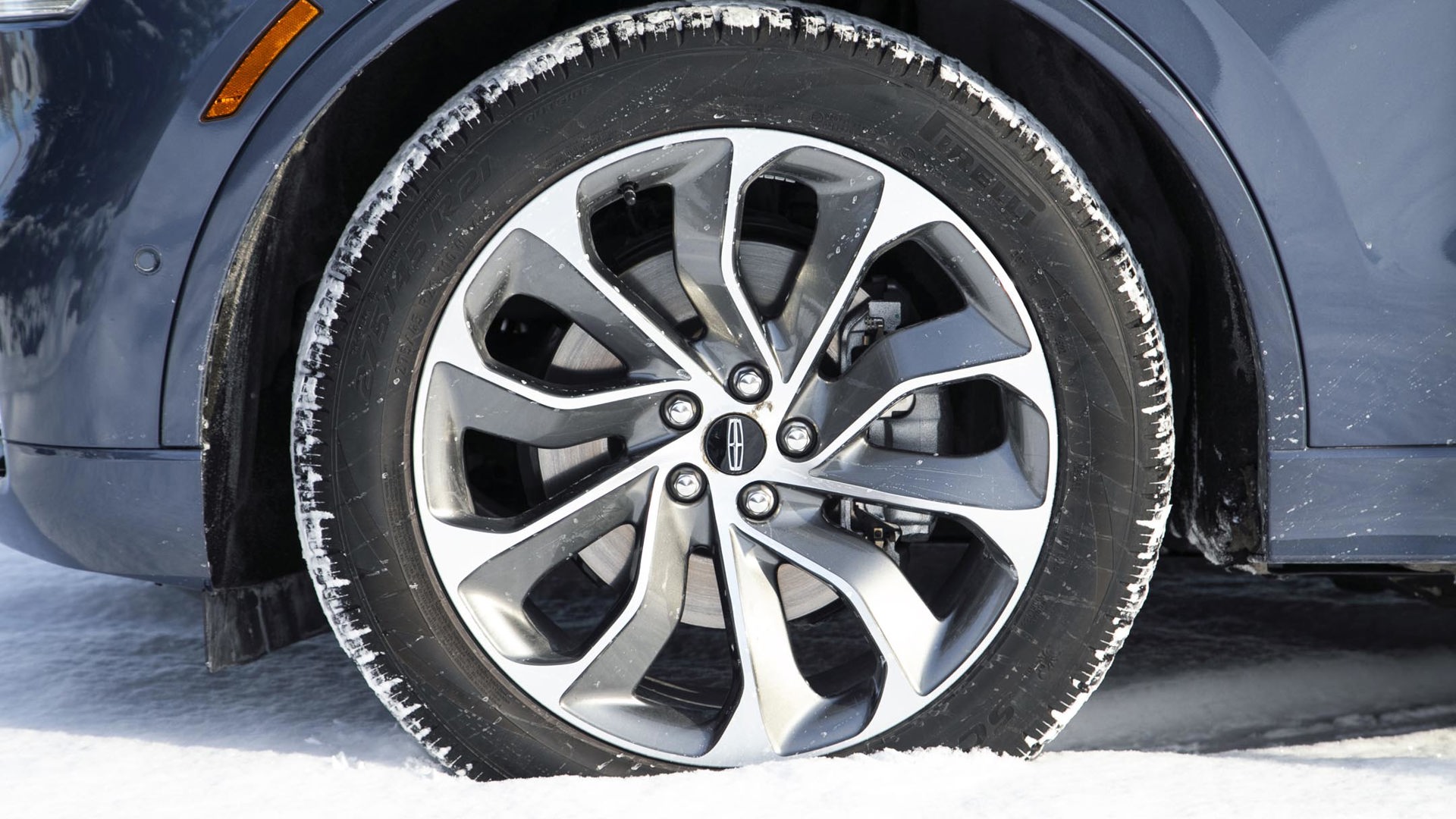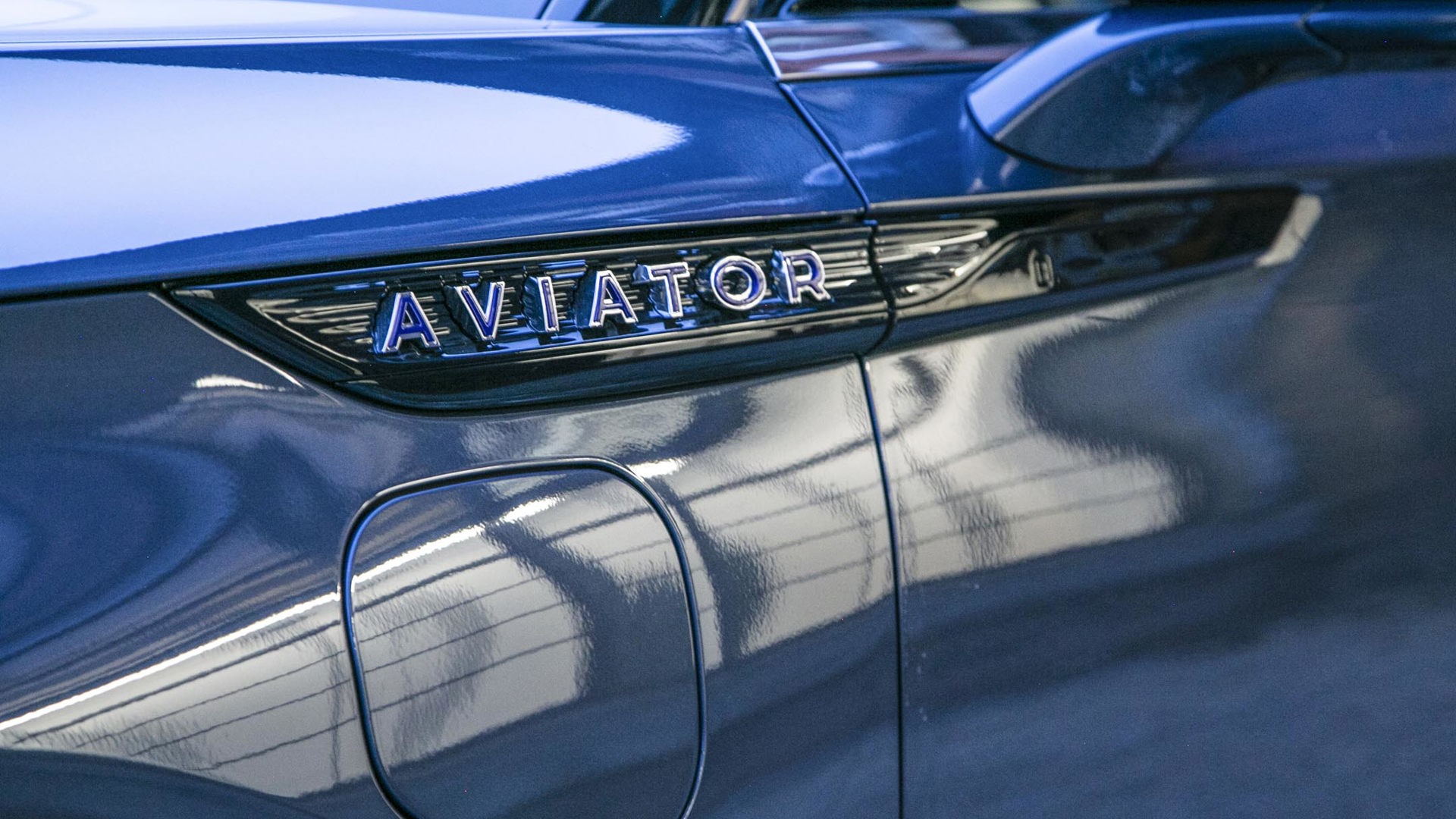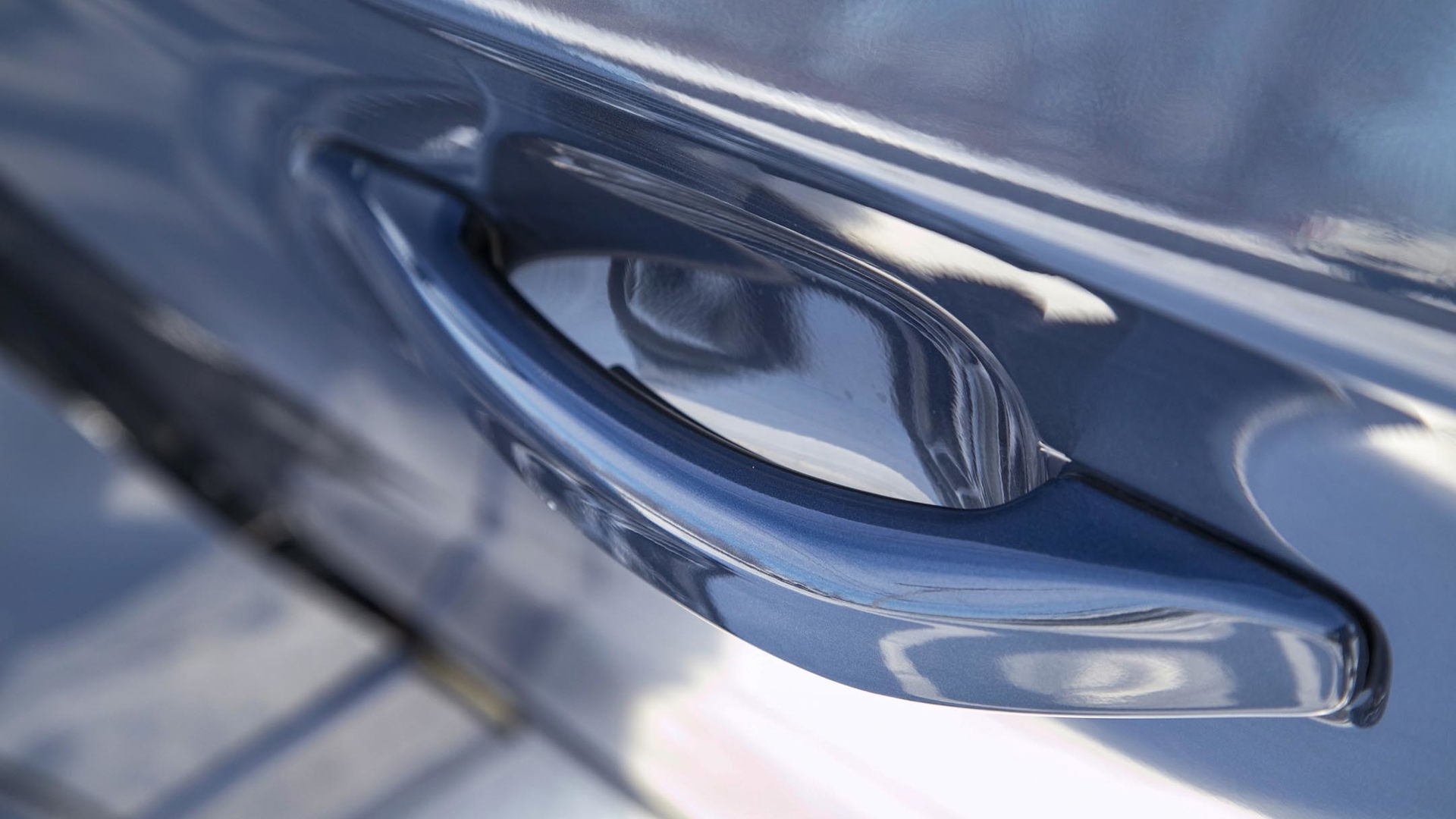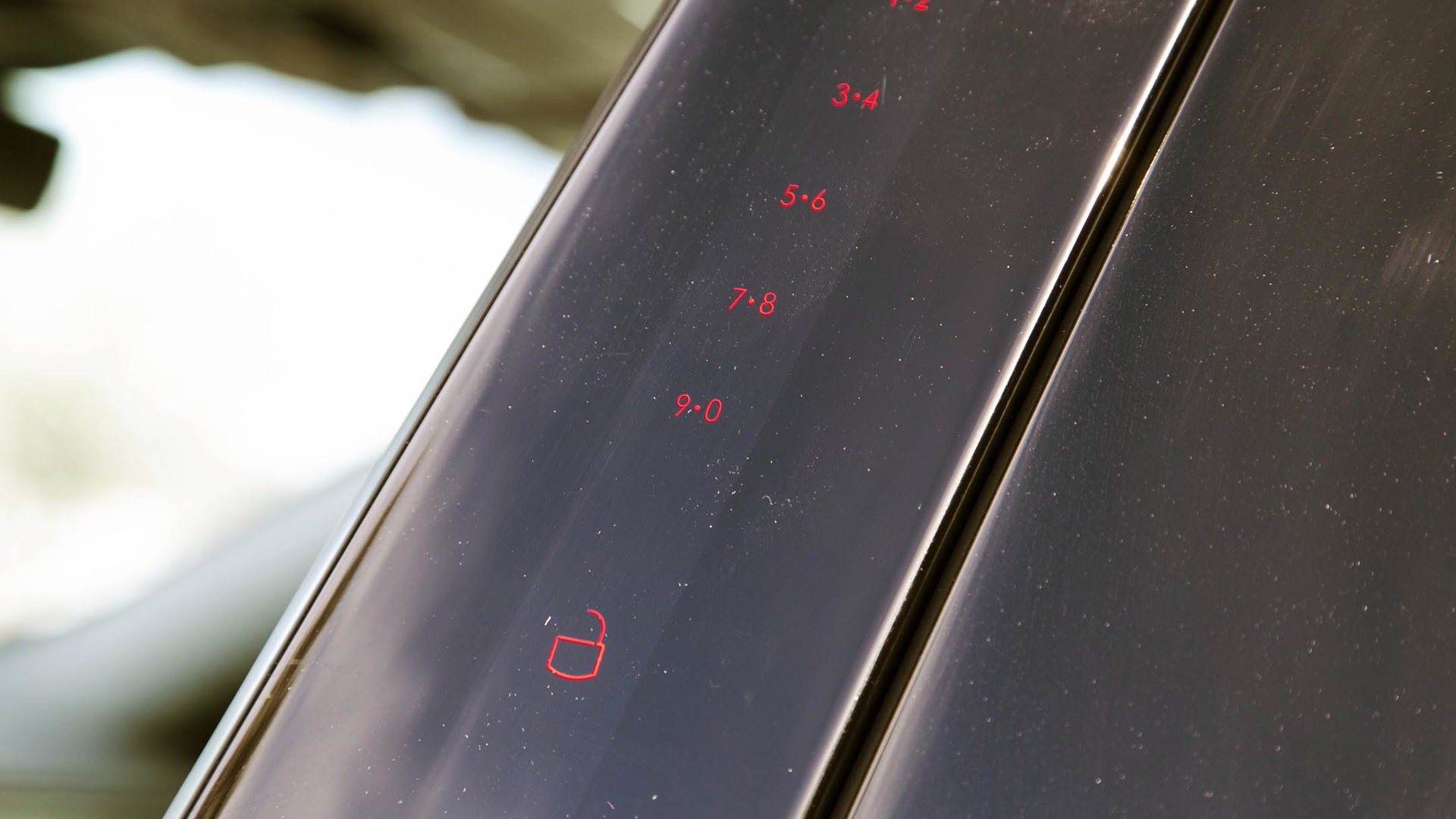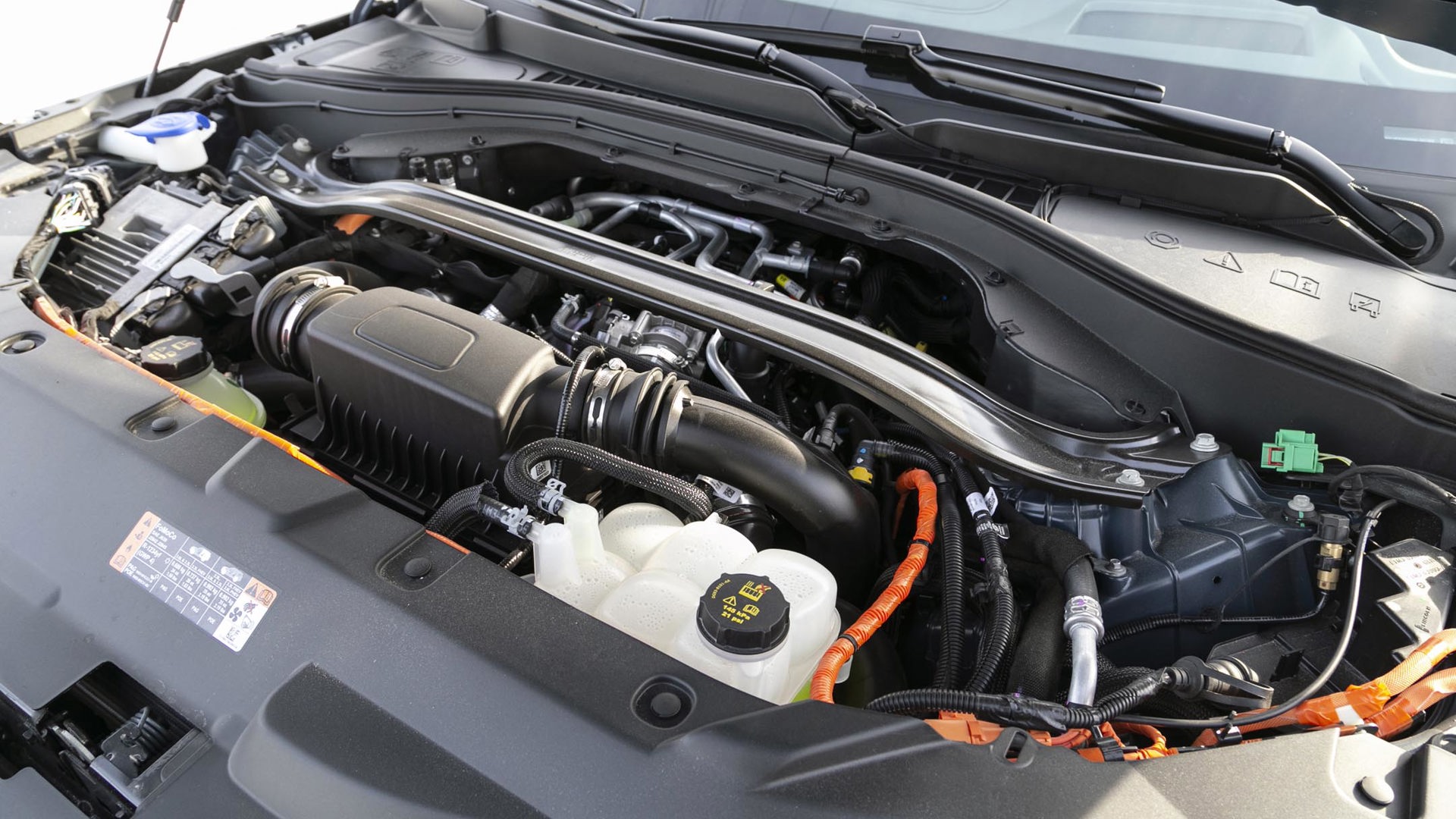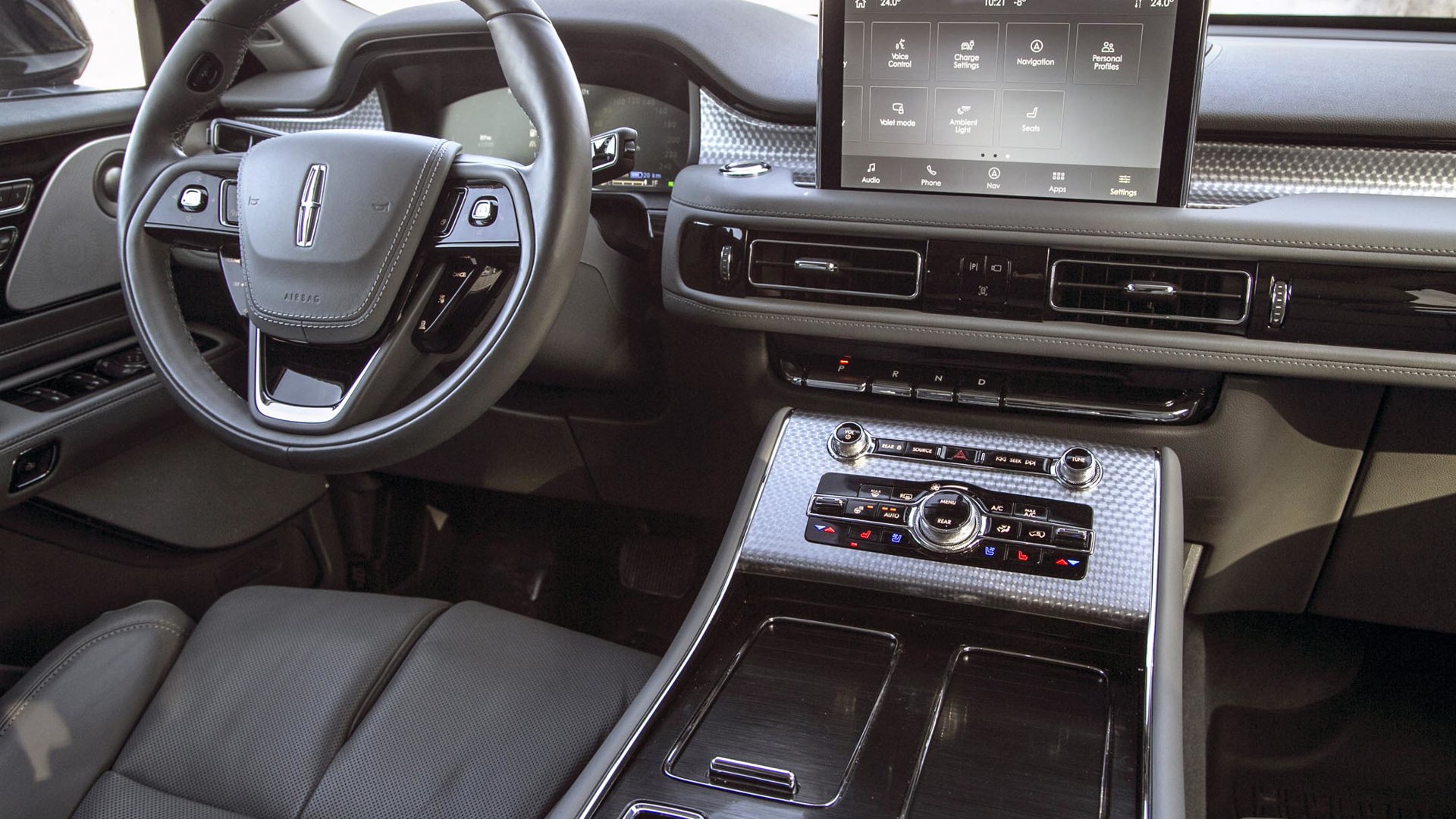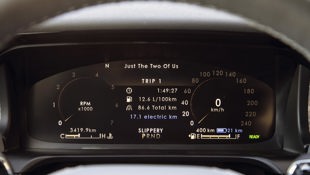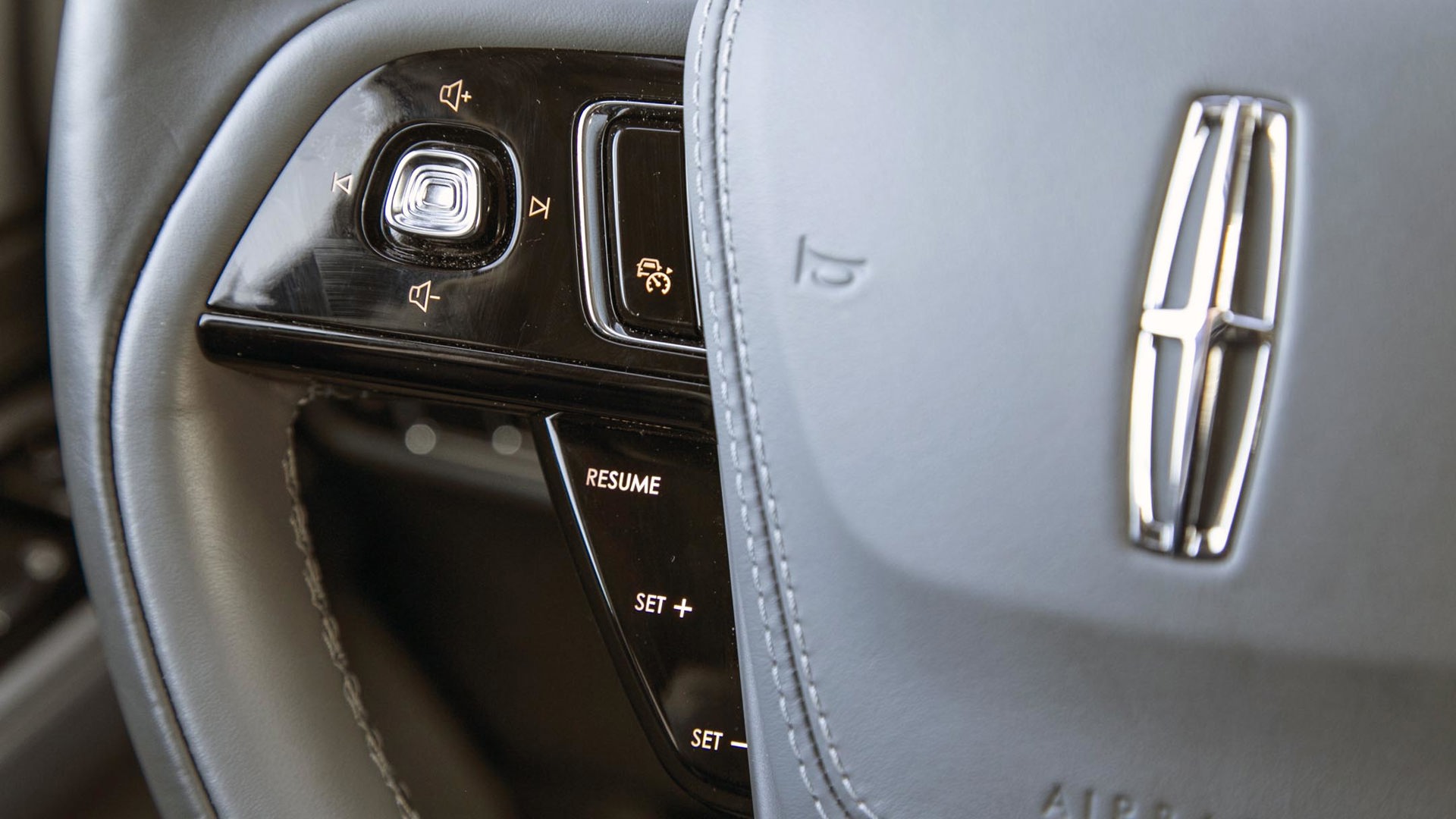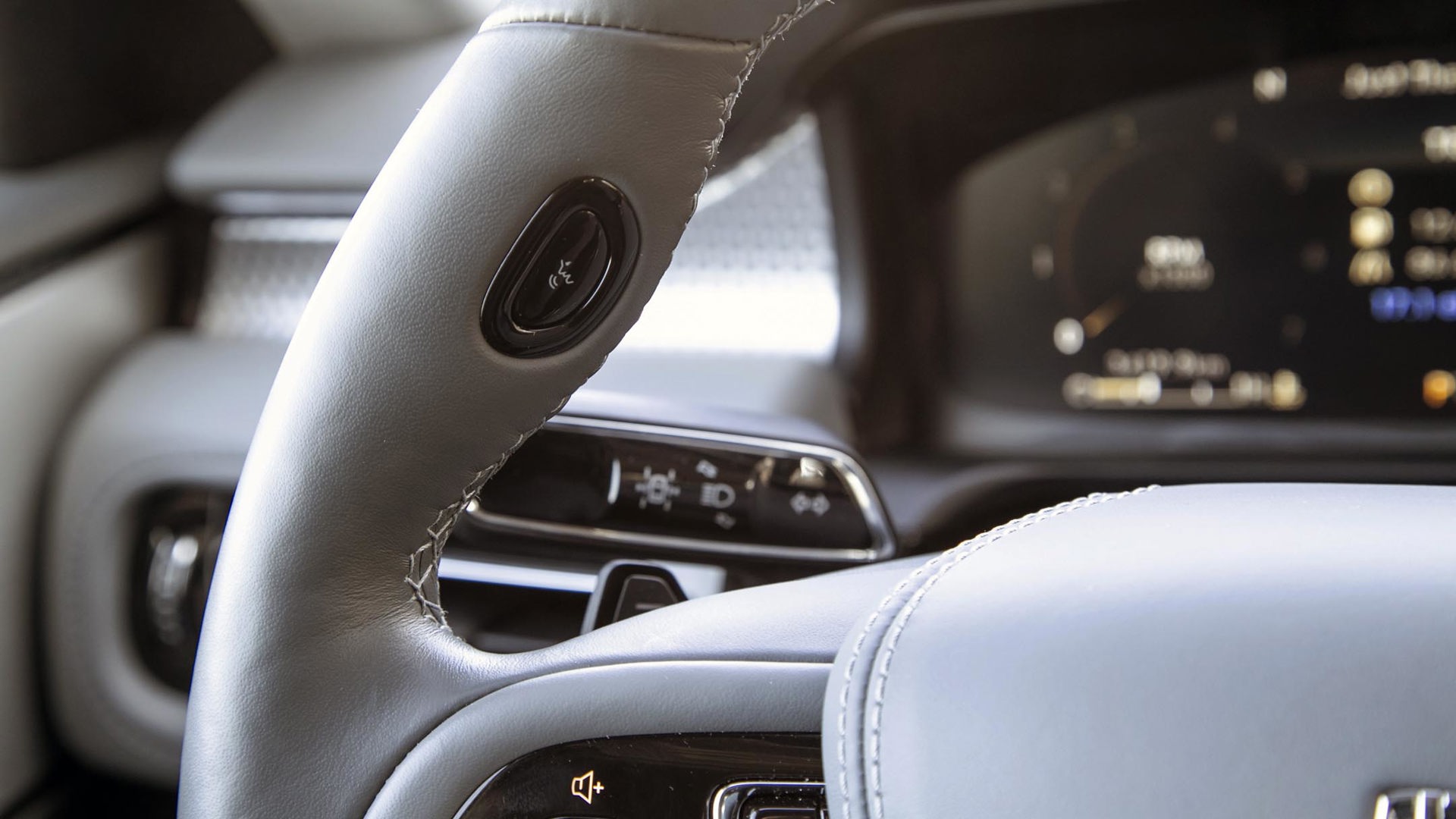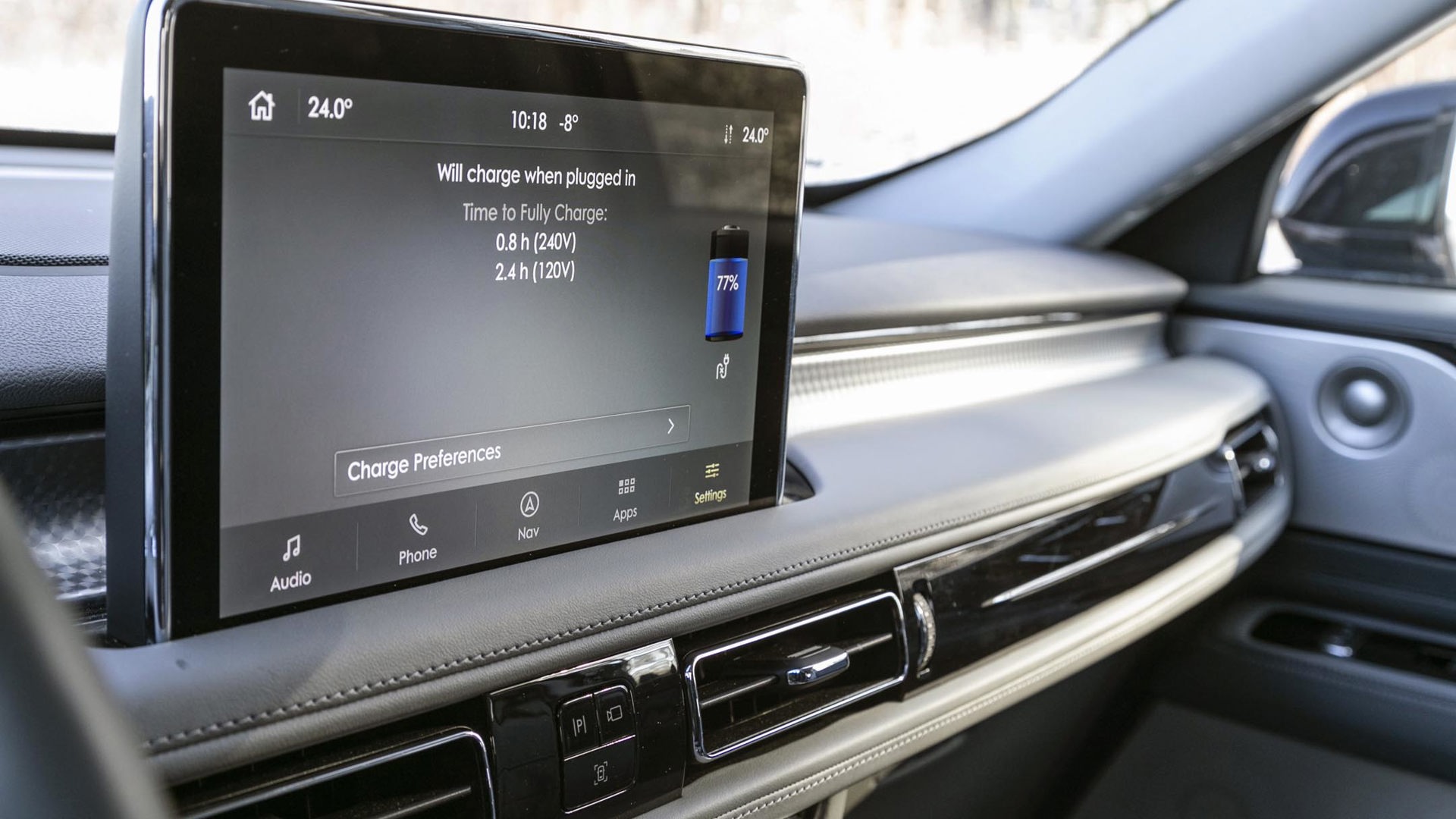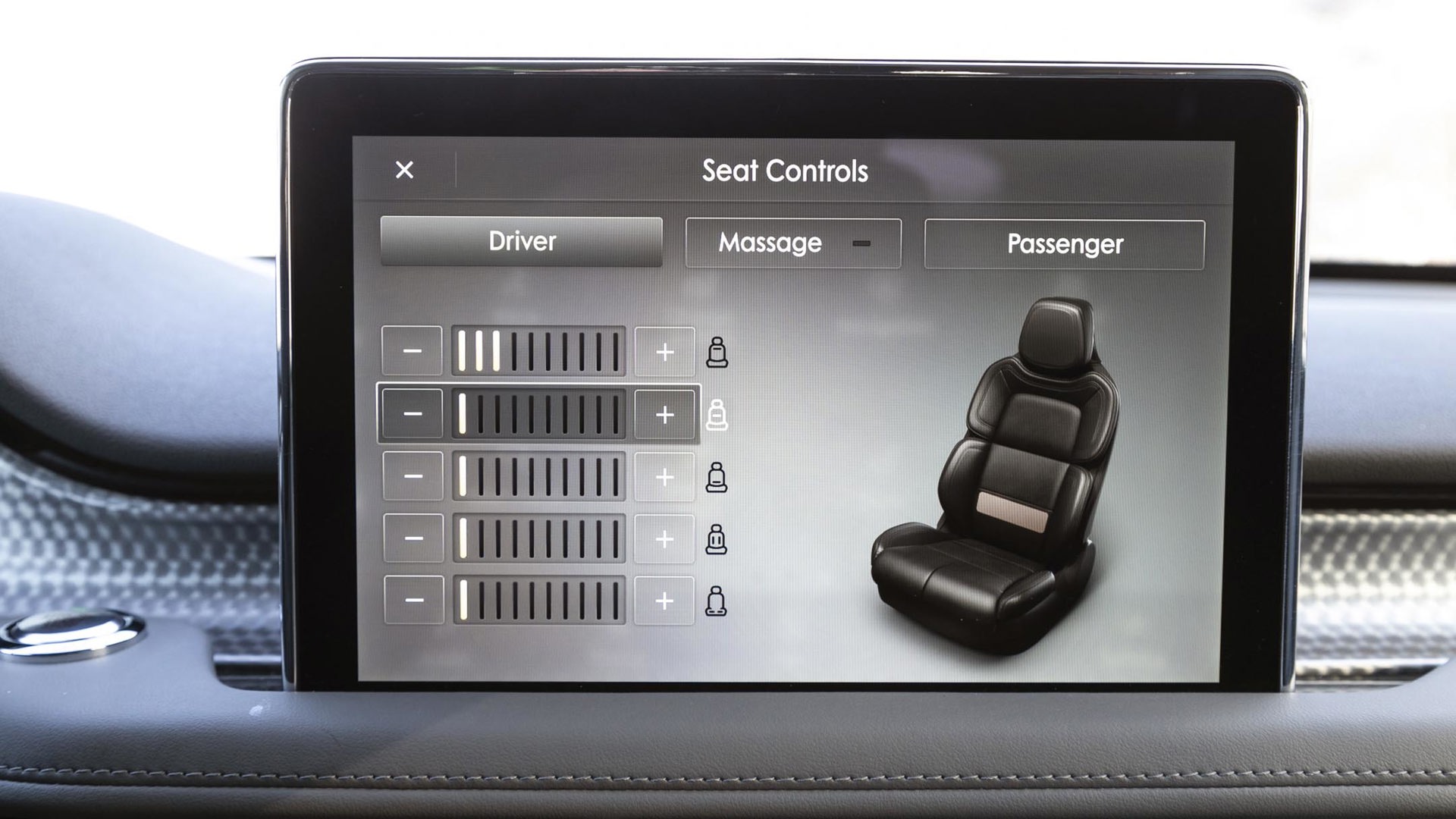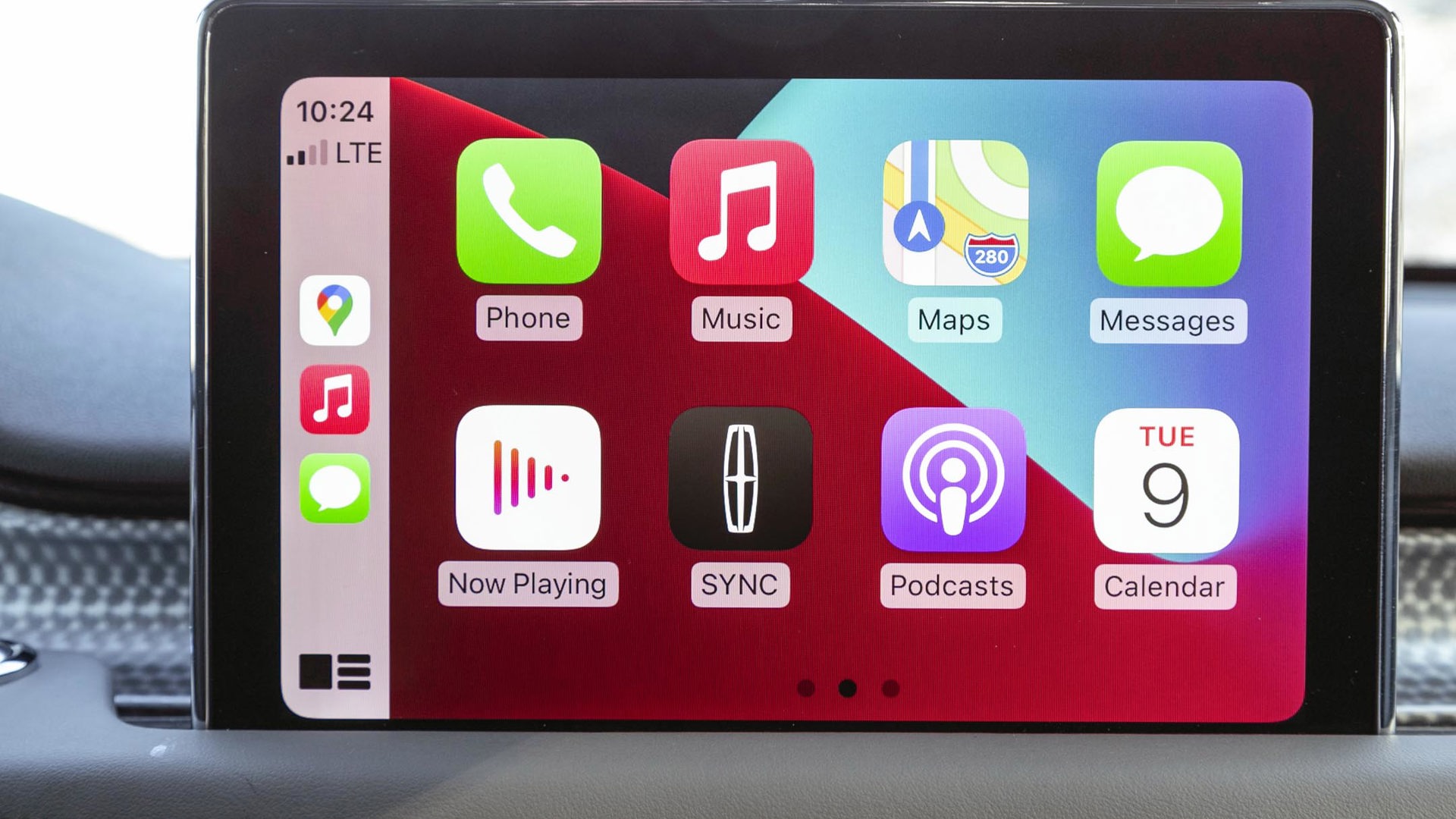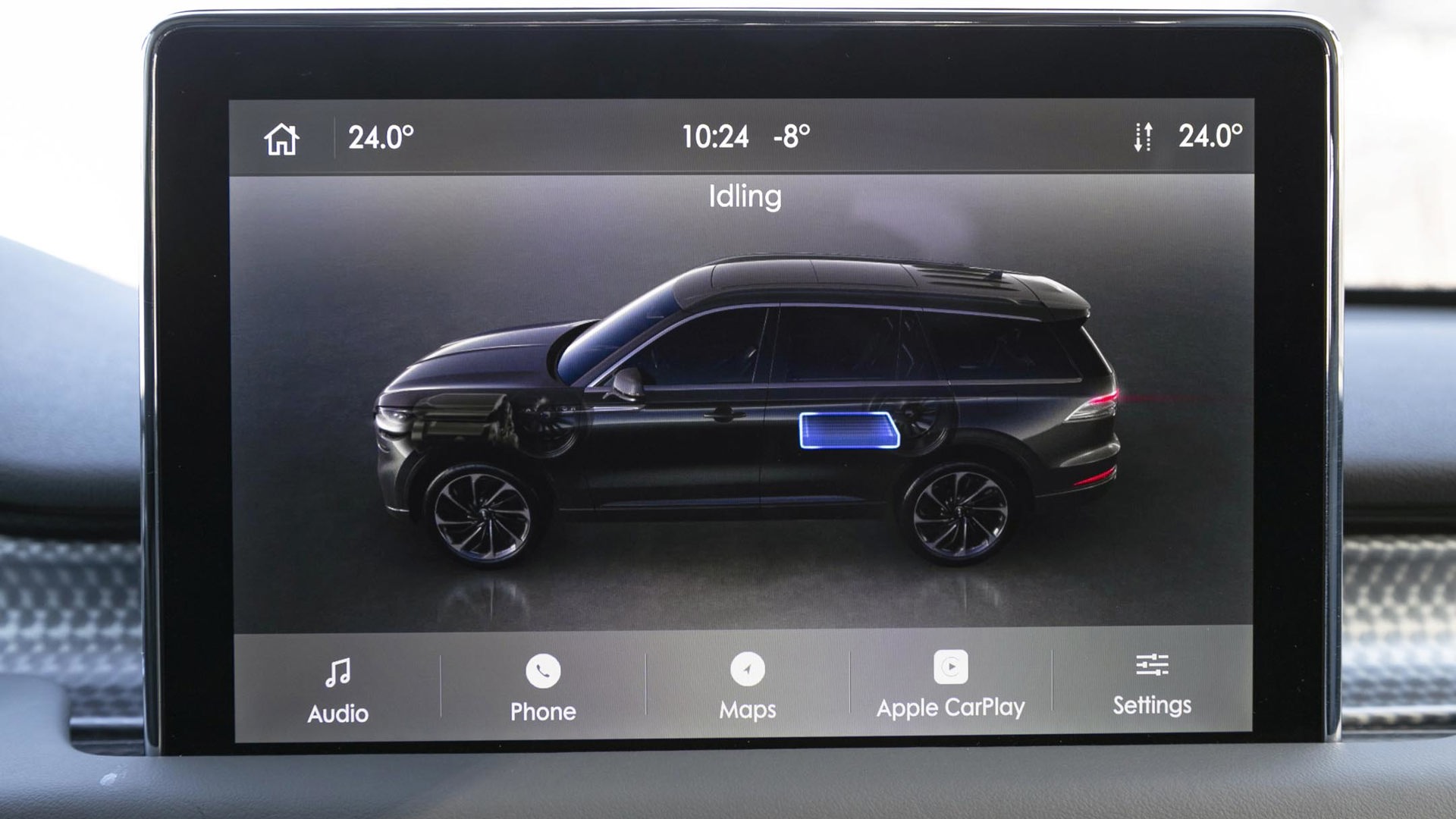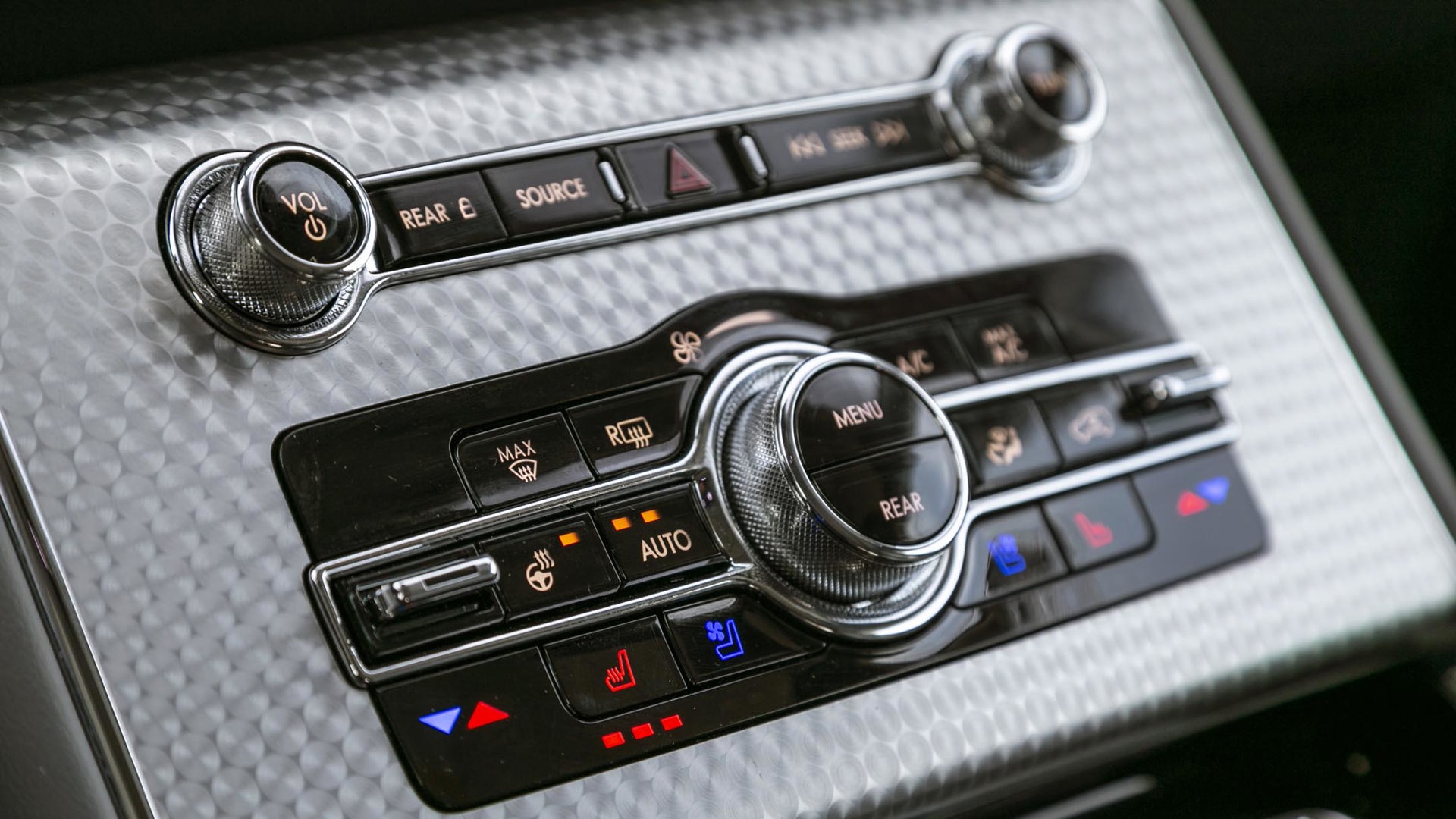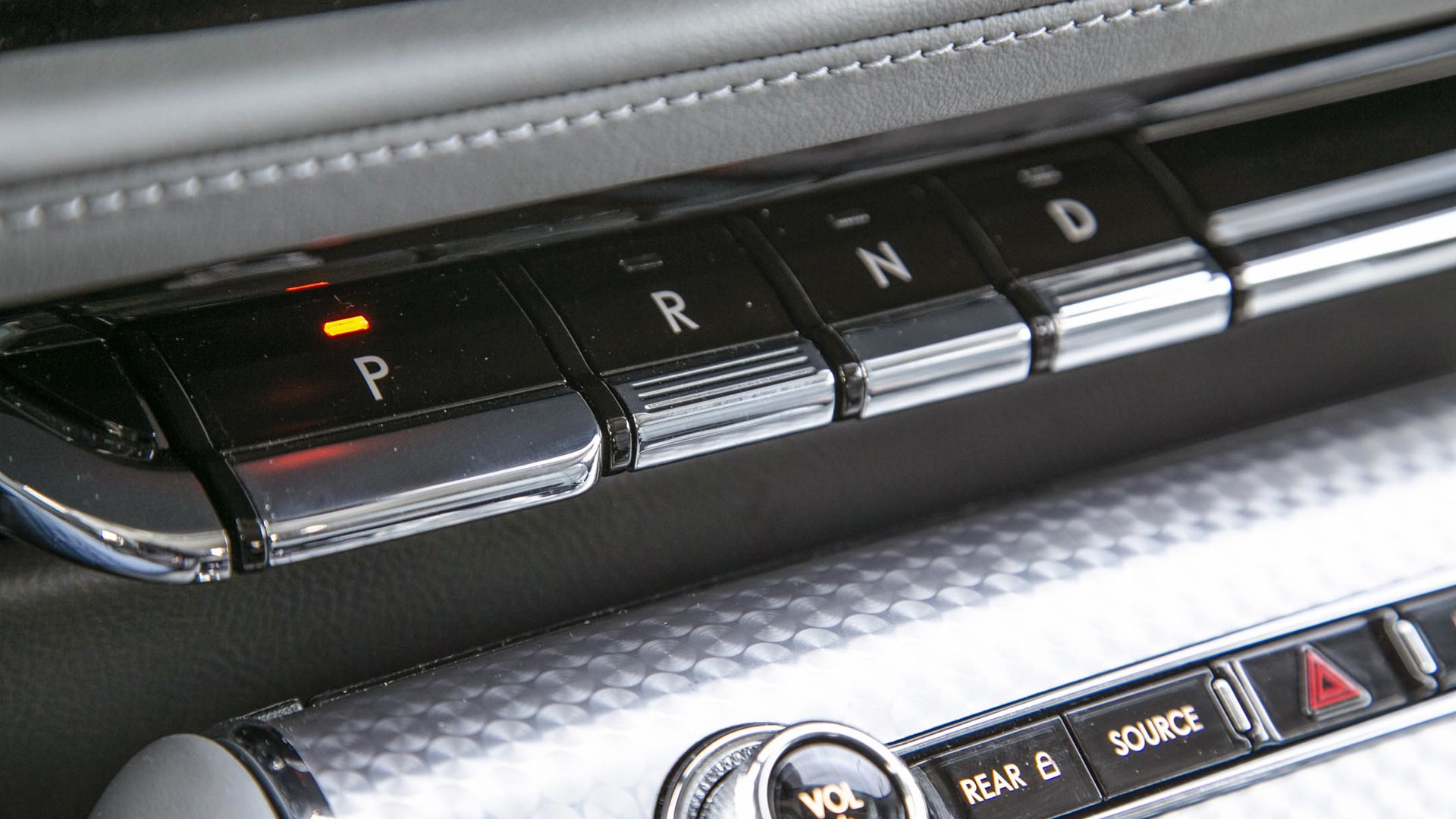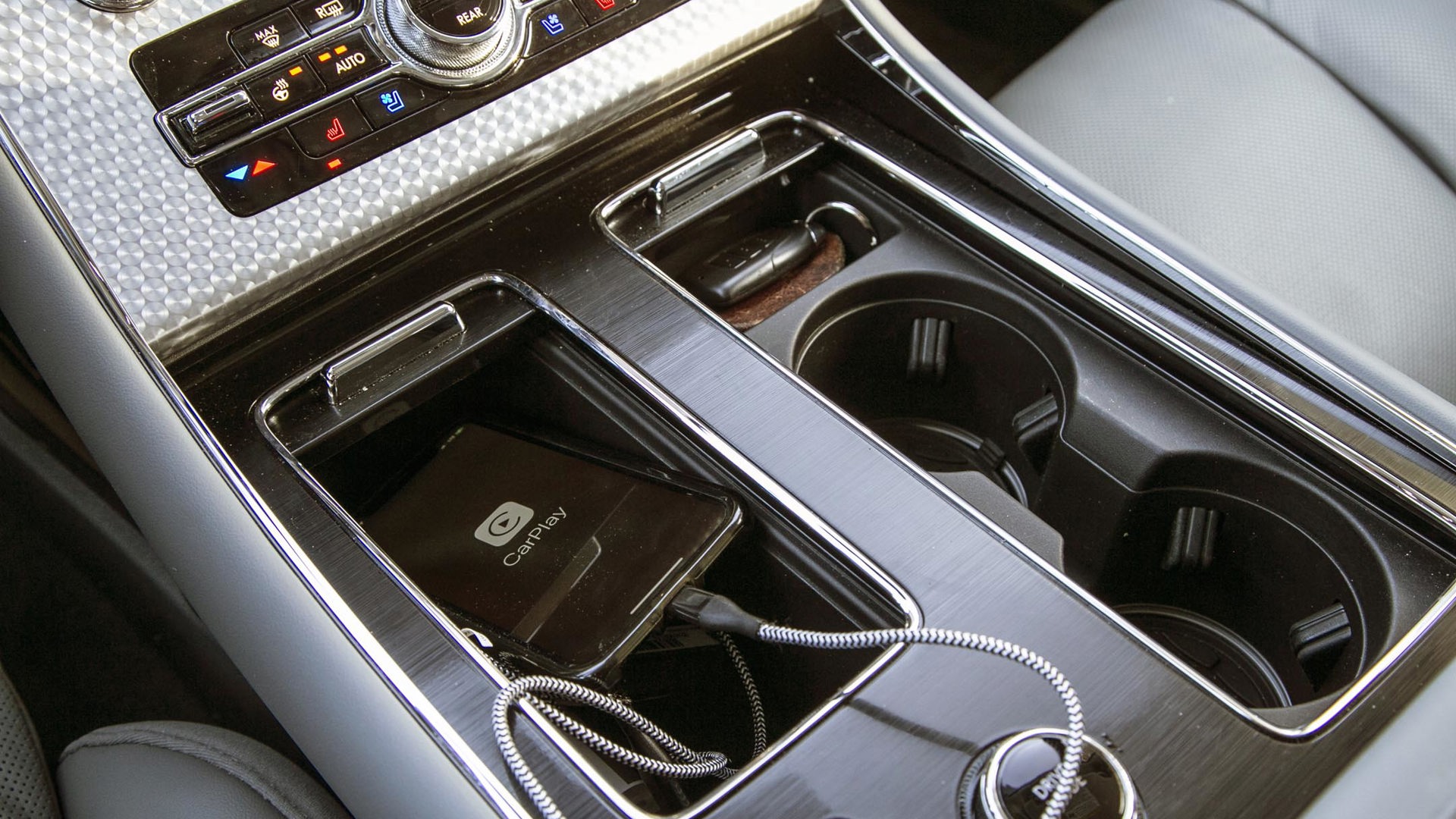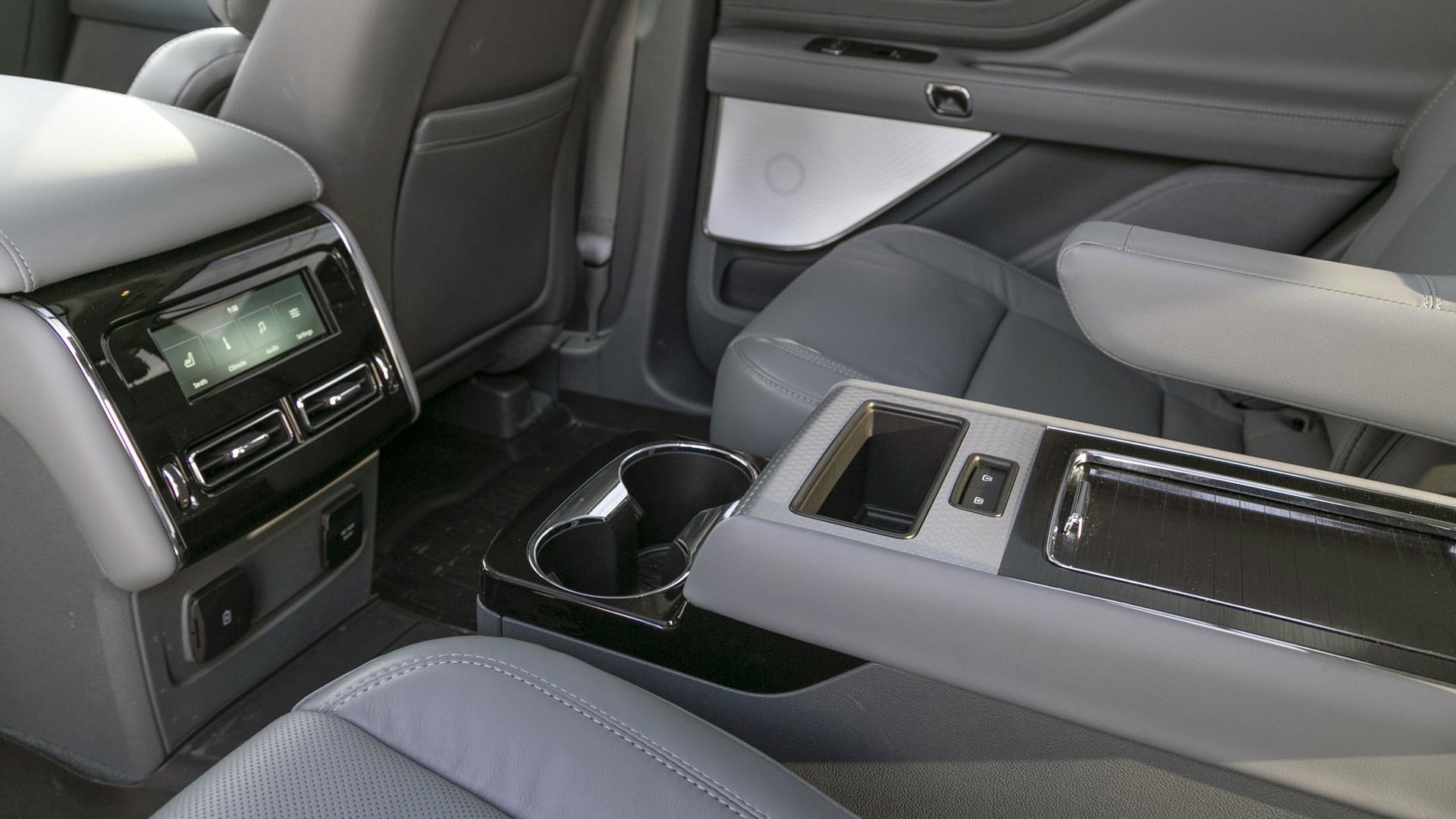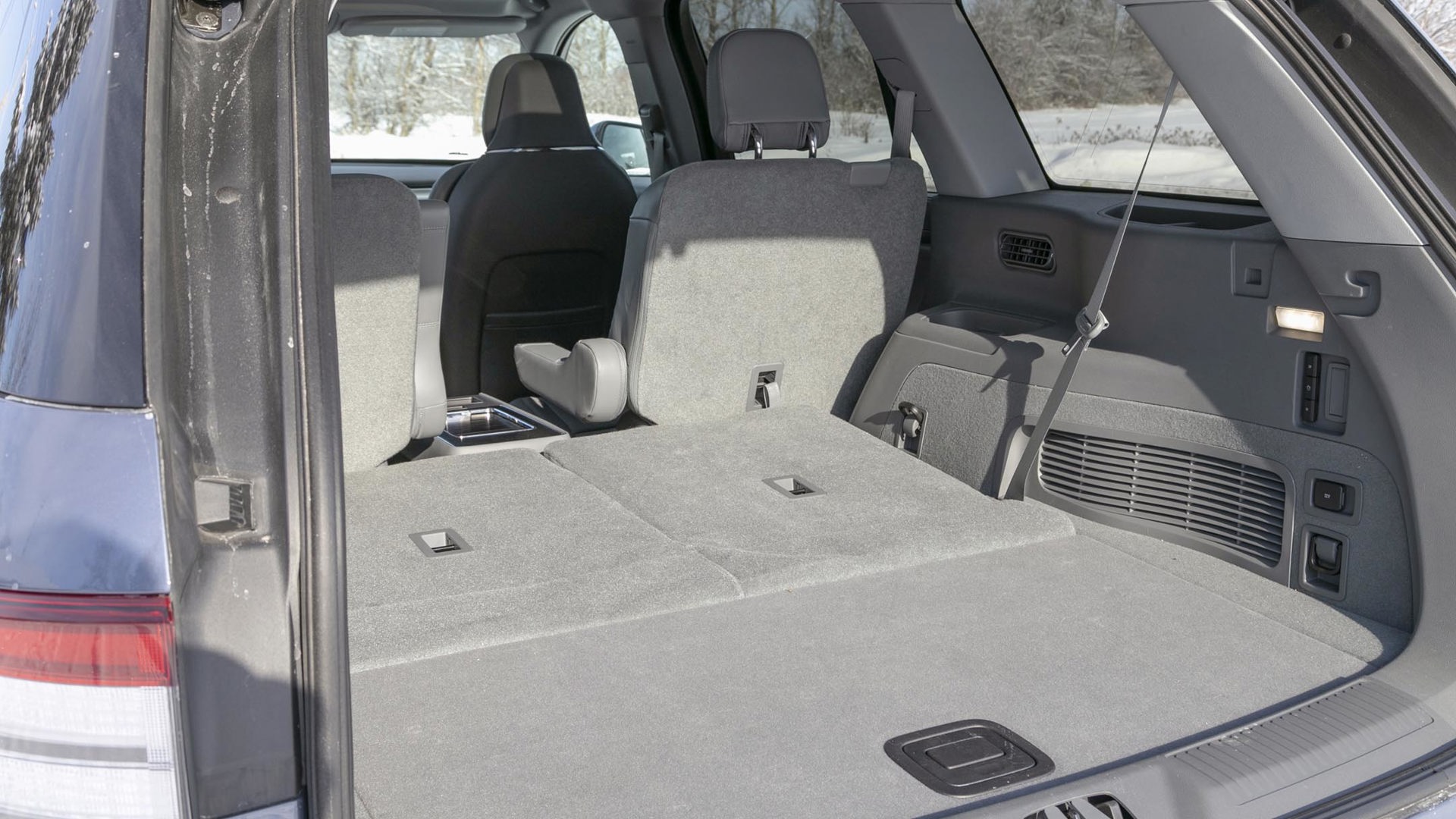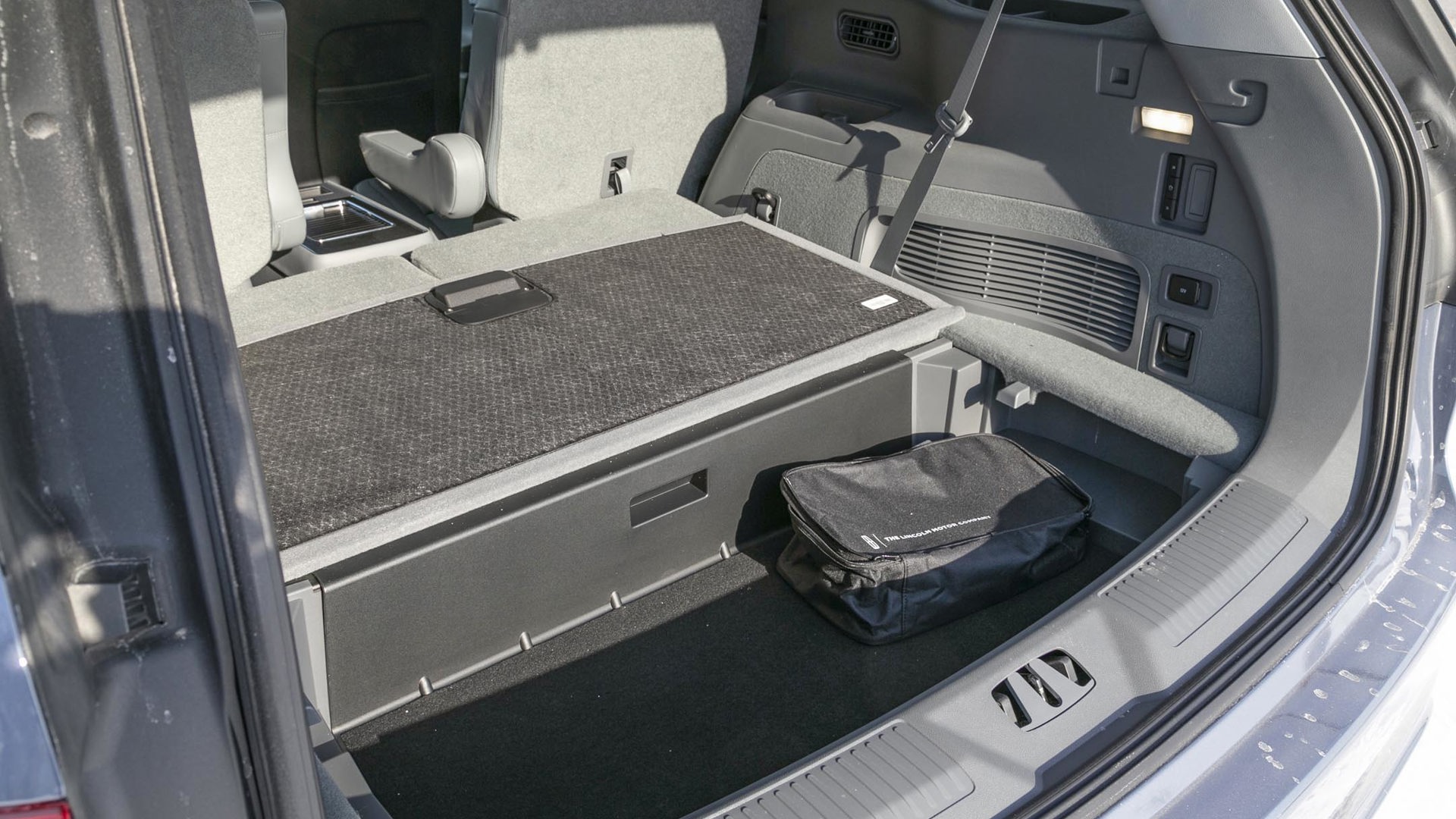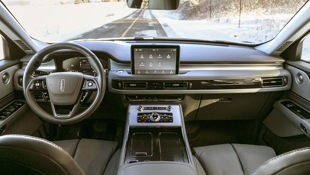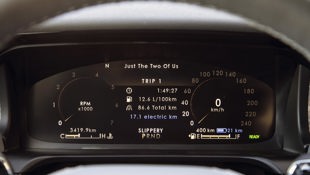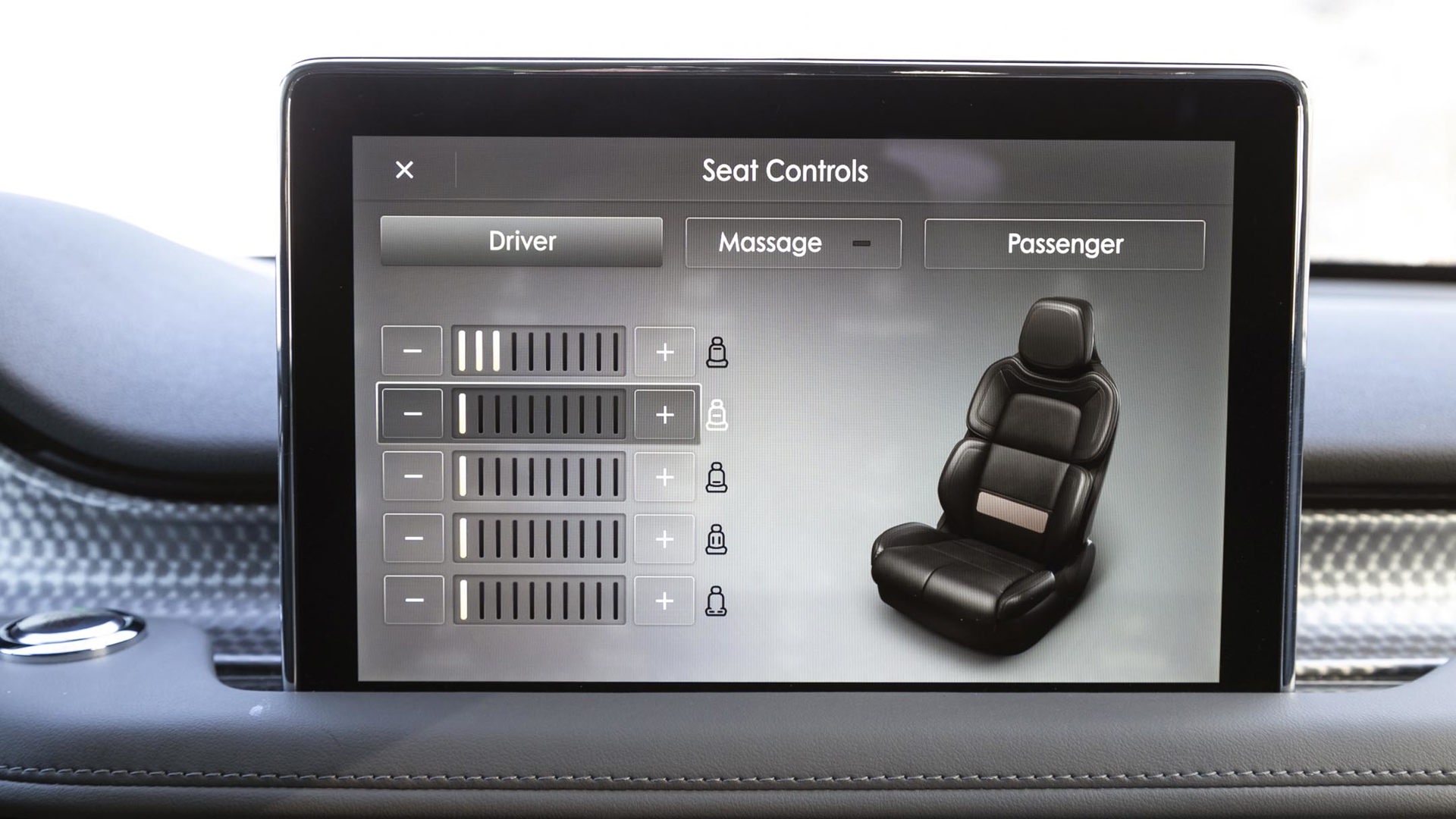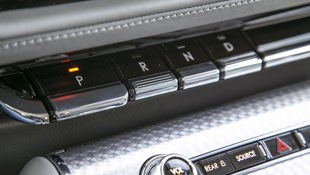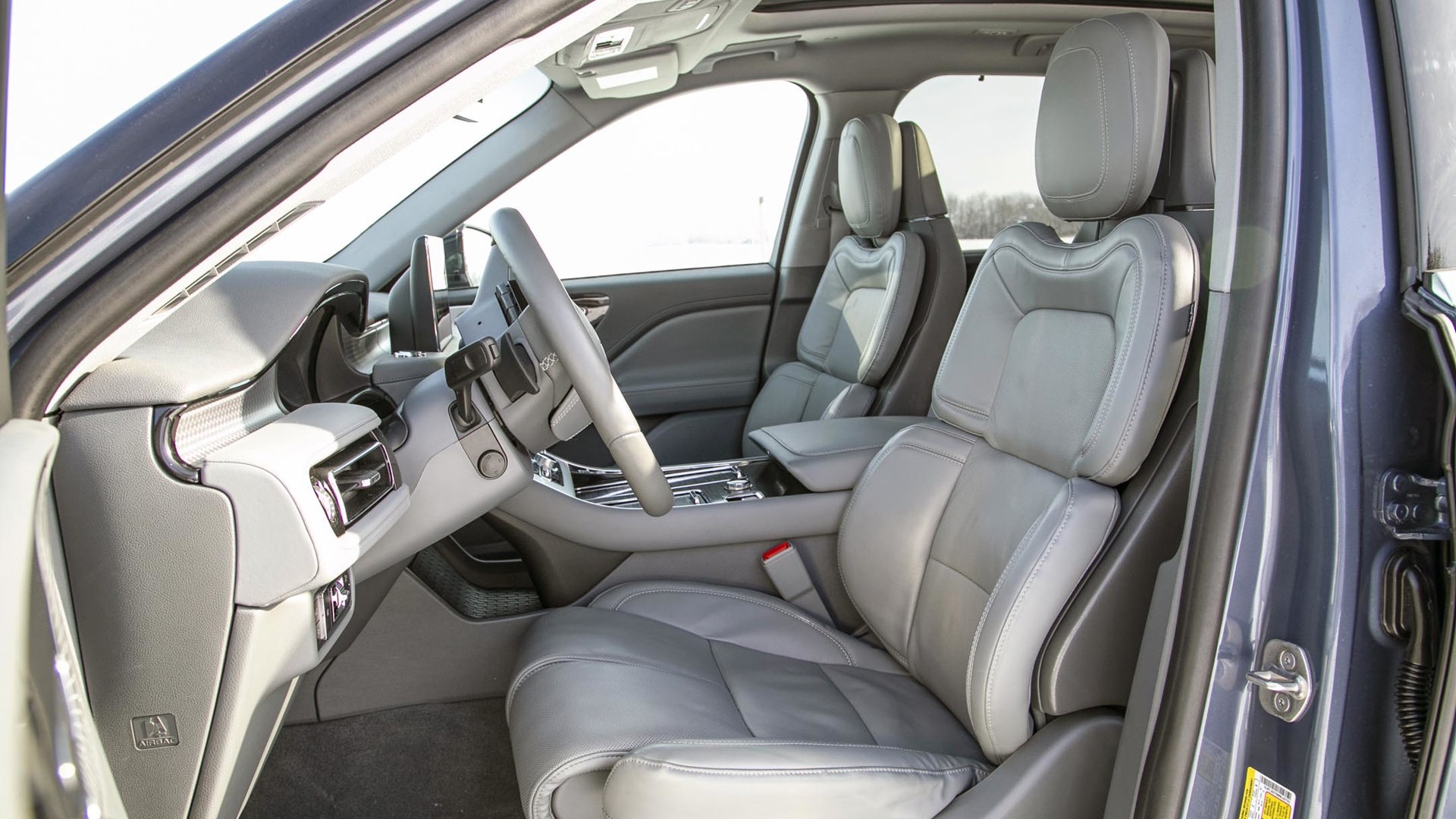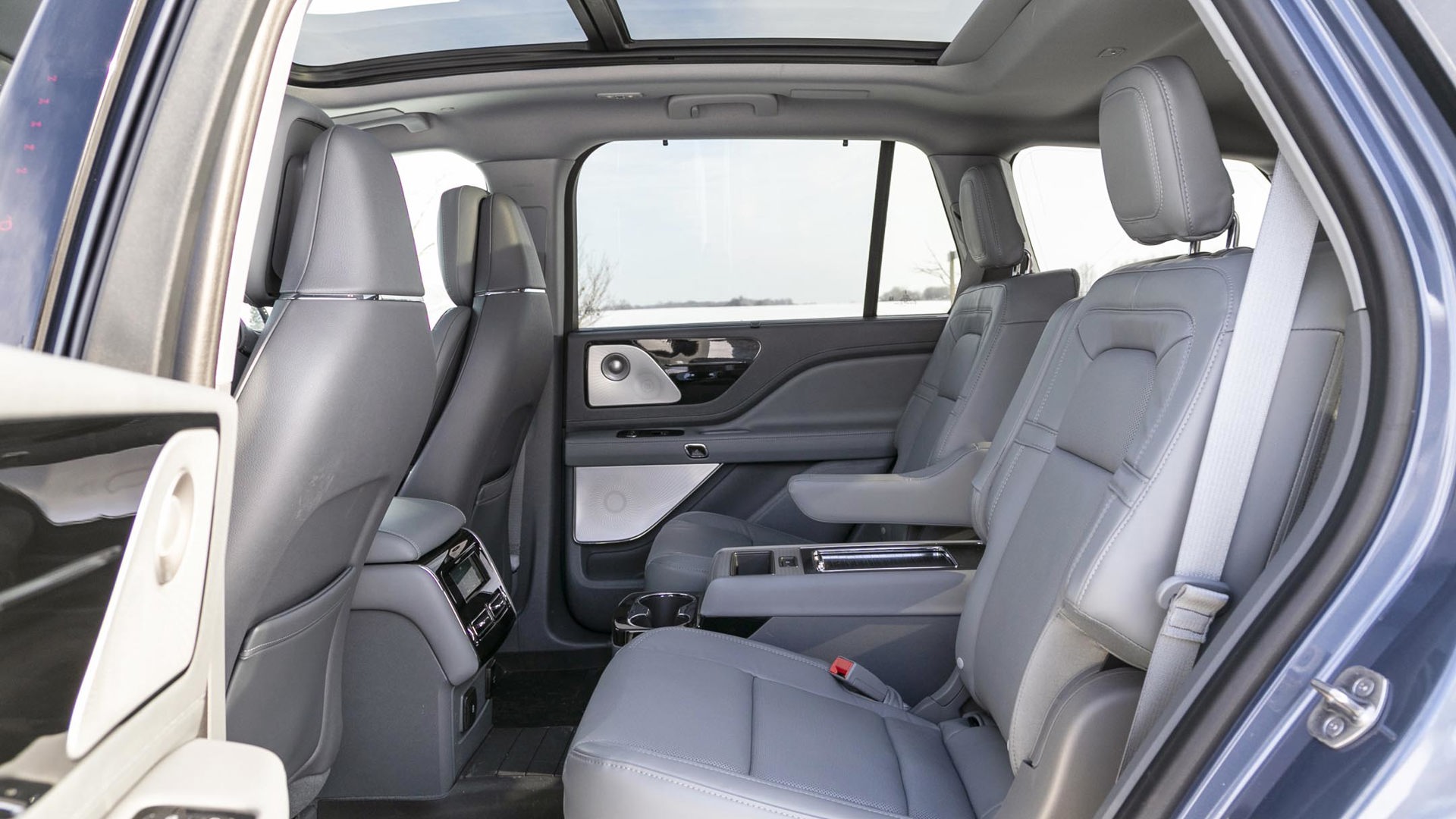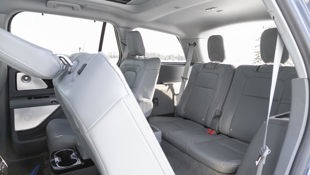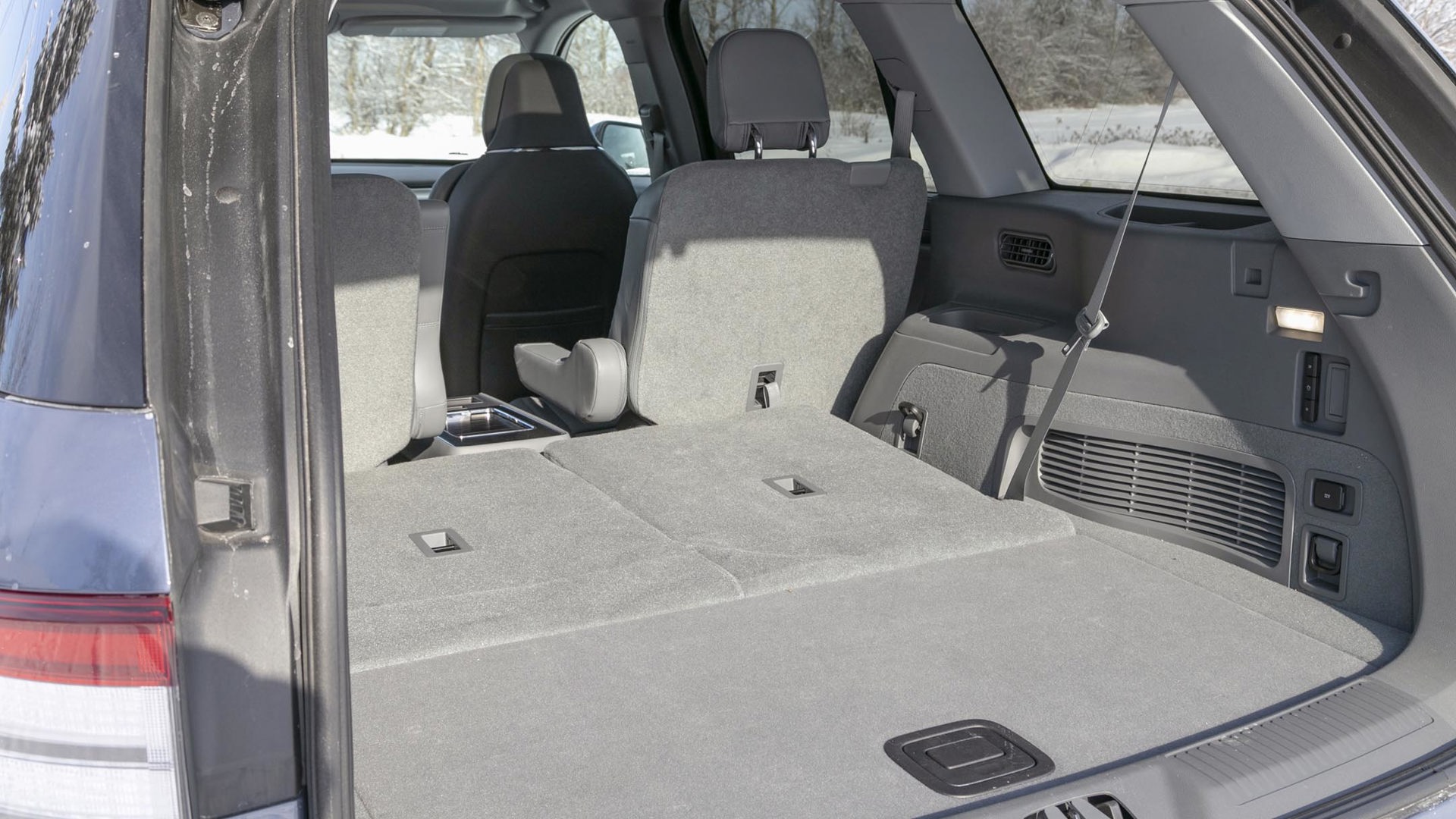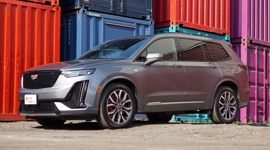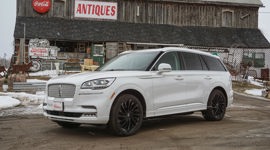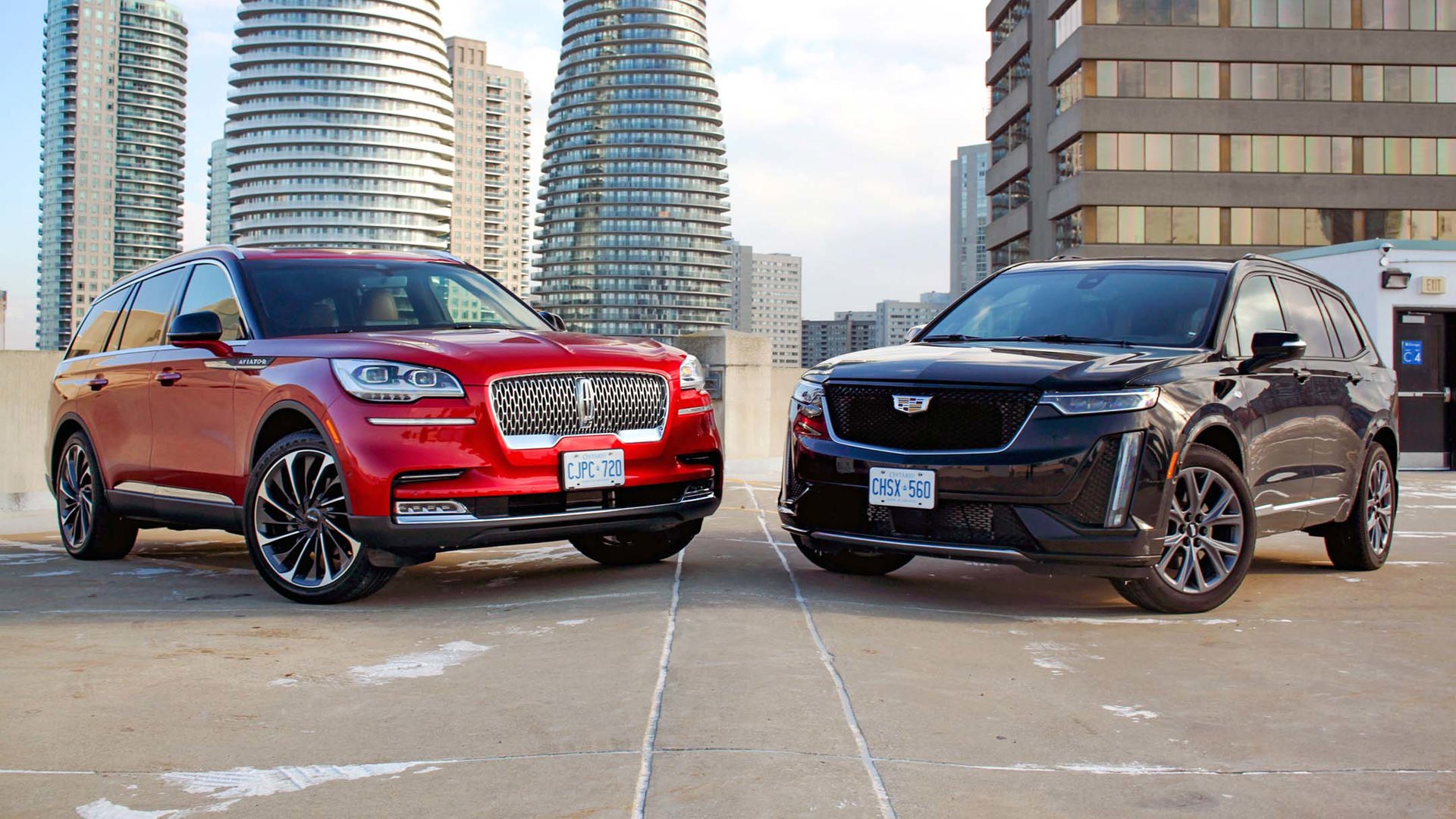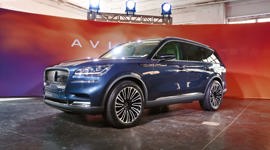 AutoTrader SCORE
AutoTrader SCORE
-
STYLING9/10
-
Safety8/10
-
PRACTICALITY8/10
-
USER-FRIENDLINESS7/10
-
FEATURES9/10
-
POWER8/10
-
COMFORT8/10
-
DRIVING FEEL6/10
-
FUEL ECONOMY7/10
-
VALUE6/10
With the introduction of the current iteration of the Navigator a couple years ago, Lincoln put the luxury car competition on notice that it was a brand to be taken seriously.
Predictably, the Navigator scooped up kudos from the automotive media, and sales increased notably. The follow-up act looked even better, with the midsize Aviator slotting in beneath it and promising a plug-in hybrid (PHEV) version to top the range. After a week with the 2021 Lincoln Aviator Grand Touring, however, I’m left with mixed feelings about this electrified SUV.
Fuel Economy: 7/10
The green-vehicle licence plate bestowed upon my tester by the Province of Ontario holds promise that this Aviator is on a conquest to save the planet – or at least to save some fuel. Compared to the non-hybrid Aviator Reserve, this Grand Touring edition conserves nearly three litres of premium gas for every 100 km driven in the city. That’s a decent improvement, and even though highway consumption is virtually the same between the two, the Grand Touring’s combined rating betters the Reserve by about 1.5 L/100 km, earning an official figure of 10.3 L/100 km.
Within its class, this Aviator’s consumption rate falls well short of the plug-in version of the Volvo XC90 and the Lexus RX 450h conventional hybrid, but betters the BMW X5 PHEV.
The Aviator can also run on pure electric juice for a while – a little less than 30 km, in fact – but it makes for sluggish acceleration since it’s meant to be a supplementary power source, not a primary one. Still, working in concert with the gas engine, it was easy for me to achieve 25 to 30 per cent of my typical suburban commute without the gas engine running, and with enough charge left in the battery to do the same on the return home. The Aviator’s 76-L fuel tank, meanwhile, limits its range to roughly 600 km of mixed driving.
Power: 8/10
The Aviator’s underpinnings are shared with the latest Ford Explorer – a rig that, in ST trim, has a twin-turbocharged V6 at its heart that pumps out a sensational 400 hp. That same drivetrain resides in the base Aviator, but here, Lincoln has added a 13.6-kWh battery powering an electric motor that brings the tally to 494 hp.
Impressive though that is, it’s the Aviator Grand Touring’s electrified torque that really raises eyebrows: there’s a whopping 630 lb-ft of it. With the so-called excite drive mode selected and the throttle pinned to the floor, the big SUV lunges forward from a standstill enthusiastically. The battery and motor add a whopping 350 kg (770 lb) to the already portly Aviator, making for a total mass north of 2,500 kg (5,500 lb). As such, even with such formidable torque, the Grand Touring isn’t really any quicker than the non-electric version, but the figure means you can at least boast that your family wagon dispenses 160 lb-ft more torque than your neighbour’s new Chevrolet Corvette.
Driving Feel: 6.5/10
Unlike most hybrids I have driven recently, the Aviator’s electric power feels very much like an afterthought when driving normally. With a full charge, many PHEVs in their default setting will favour battery power over gasoline in the interest of maximum efficiency, but the Aviator’s motor makes a modest effort before the gasoline engine kicks in to do the bulk of the acceleration work.
The transition from pure electric power to the gas-fired kind is surprisingly abrupt and the engine’s noise is considerable, which may cause owners to wish for more refinement from their luxury SUV. Similarly, while regenerative braking is rarely smooth it’s particularly grabby, making linear slow-downs a chore.
Given its sheer mass and the considerable real estate the Aviator takes up, it manages its handling well enough with minimal body roll. The standard all-wheel drive helps maximize the abundant thrust in a controlled fashion, even on slippery surfaces. On dry roads the 275-mm wide 21-inch Pirelli Scorpion Zero tires provide decent handling feel, but buyers should plan for a second set of proper winter tires since these ones offered frighteningly little grip for steering and braking in the snow, especially when coupled with the hybrid’s curt inputs to throttle and braking.
Safety: 8/10
Although optional, my test vehicle was fitted with Lincoln’s advanced, active safety suite that includes blind-spot and rear cross-traffic monitoring and alerts, as well as a lane-keeping assistant and pre-collision scanning, driver warning, and self-braking that detects both vehicles and pedestrians. Lincoln also cleverly fits a tiny washer fluid jet above the front and rear cameras, ensuring they’re always kept clear, too.
There’s a full host of airbags throughout the cabin, including curtain bags protecting occupants in all three rows of seats. The Aviator received a Top Safety Pick award from the Insurance Institute for Highway Safety (IIHS) and the Aviator’s Explorer twin received a five-star safety rating from the United States National Highway Traffic Safety Administration (NHTSA).
Comfort: 8.5/10
While safely ensconced in the Aviator, three rows of passengers can travel around in significant comfort. Well, two rows of passengers can, but those relegated to the third row had better be smaller folks since the space is minimal.
Second-row seats are heated and cooled, and the occupants will have manual window shades beside their captain’s chairs, and access to an AC plug point, USB ports, and their own climate controls. They’re even given control over the sunshade for their portion of the panoramic sunroof.
For those lucky enough to be up front, the optional 30-way-adjustable seats should help just about anyone find a comfortable position, and once situated, the active massage function adds another level of contentment.
Lincoln has done a very good job keeping the cabin isolated from wind and road noise, but the engine’s snarl penetrates louder than I’d expect in such a premium machine.
Features: 9/10
Beyond the massaging thrones, the top-tier Aviator is equipped with adaptive cruise control that operates in stop-and-go traffic, plus lane-centring and traffic sign recognition. There’s an active park function that works for both parallel and perpendicular parking spaces, a head-up display, on-board Wi-Fi, and a wireless charge pad. The 28-speaker audio system produces excellent sound quality and has loads of power.
User Friendliness: 7/10
Lincoln’s 10.1-inch touchscreen infotainment system offers a logical menu layout and connects to both Apple CarPlay and Android Auto. There were a few occasions where it lagged briefly behind user inputs, but for the most part there are no complaints during testing. Plus, there’s a knob for each volume, tuning, and climate fan speed, and even the controls for the seat and steering wheel heaters have separate buttons instead of being buried deep in a menu system, all of which earns bonus points for usability. The all-digital instrument panel offers minimal reconfiguration options, but presents its information clearly enough.
There are a few ergonomic gaffes with the Aviator, though. The first is the electric door actuator that requires a hunt for a small thumb button inside, and a squeeze of a touch panel on the outer handle to open the door. It feels fragile in hand, and worries me that it’s just a needless complexity and possible failure point. Likewise, Ford and Lincoln have held fast to the touch-panel locking codes on their vehicle doors for generations, but with hands-free locking and even phone-as-a-key service now, it seems entirely redundant. Trying to quickly lock the Aviator by pressing a small lit-up lock icon on the B-pillar is a tedious experience at best. [Some of us still love the entry pad, Mr. Wilson. – Ed.]
Inside, Lincoln’s push-button gear selector is a true case of form over function, and will become quickly loathed by anyone who has had to fumble around to find reverse in a quick three-point turn.
Practicality: 8/10
As a sizeable three-row SUV, it offers a lot of practicality. Four passengers will have an abundance of space in versions equipped with the two rows of captain’s chairs, and a second-row bench seat is available. The third row is suitable for occasional use for two passengers, but cuts dramatically into the Aviator’s otherwise spacious cargo hold.
With all seats up, the Aviator will hold 519 L of stuff, which grows to 1,183 L with the third row folded, and 2,200 L with second-row flat, too, on versions with the middle bench seat.
Even in this hybrid trim, the Aviator is still able to tow more than 2,500 kg (5,600 lb), and when equipped with the trailer tow package it benefits from the company’s trailer sway control and smart trailer tow function.
Styling: 9/10
From Lincoln’s range of four SUVs, the midsize Aviator is arguably the best-looking. While clearly derivative of the flagship Navigator, the Aviator’s lower, sloping roof line creates a sleeker profile, reinforced by its swept-back headlight treatment. The grille (replete with light-up Lincoln badge) is large enough to command respect without being oversized and garish like so many competitors’ gaping maws.
It’s a handsome and well-proportioned rig from all angles, and the interior is just as sharp. While I’d rather the two-tone brown and black leather colour scheme, the grey on my tester also featured the turned-metal dash panel accents that’s such a cool retro style touch. There are no weird angles or sweeping flourishes; just a simple, timeless look here.
Value: 6.5/10
At a starting point of $81,500, the Aviator Grand Touring commands a nearly $12,000 premium over the non-hybrid version. What’s more, the Lincoln costs more than those gas–electric rivals mentioned earlier from Lexus, Volvo, and BMW, although none of those alternatives offer anywhere near the torque – nor the passenger and cargo space – the Aviator does.
In order to get some of the key active safety features, expensive option packages are required, and so-equipped, my tester reached $95,000 before destination charges or taxes. At this level, the Aviator is stepping on its Navigator brother’s toes.
Verdict
The Lincoln Aviator is a comfortable, great looking and very powerful offering in the midsize premium SUV segment. Adding the costly (and heavy) hybrid system nets modest fuel savings and no appreciable performance benefit over the already swift Aviator Reserve. For those desperate for a green plate on their sport utility, the Aviator Grand Touring would be a good choice if its application was more refined. Instead, shoppers should either forego the electrified Aviator, or consider an alternative from a competing brand.
| Engine Displacement | 3.0L |
|---|---|
| Engine Cylinders | Twin-turbo V6 PHEV |
| Peak Horsepower | 494 hp @ 5,500 rpm |
| Peak Torque | 630 lb-ft @ 2,250 rpm |
| Fuel Economy | 10.9 / 9.6 / 10.3 L/100 km cty/hwy/cmb, 4.2 Le/100 km |
| Cargo Space | 519 / 1,183 / 2,200 L behind 3rd/2nd/1st row |
| Model Tested | 2021 Lincoln Aviator Grand Touring |
| Base Price | $81,500 |
| A/C Tax | $100 |
| Destination Fee | $2,150 |
| Price as Tested | $97,100 |
|
Optional Equipment
$13,350 – Equipment Group 302A, $12,200; Ceramic Pearl paint, $900; Floor mats, $250
|
|
